- Learning Tips
- Exam Guides
- School Life

How to write a Counterclaim Paragraph, Sentence or Rebuttal
- by Joseph Kenas
- January 18, 2024
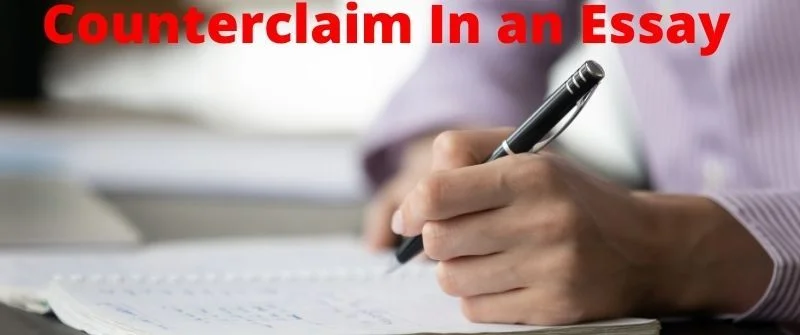
If you are writing an argumentative essay, you will find yourself including counterclaims. In this guide, we guide you on how to write a good counterclaim in an essay and how to frame your counterclaim sentence and paragraph in rebuttal.
Counterclaims are mostly included in an argumentative essay where you are required to convince your readers to agree with your arguments and point of view concerning the topic in question.
What is a Counterclaim in an Essay?
A counterclaim can be regarded as the argument or arguments that oppose the thesis statement in your essay. Within the introduction, you introduce the topic and create a thesis statement in the last sentence that makes it clear to your audience the point(s) you want to prove and the strategy you will use to prove it.
The counterclaim demonstrates to the reader that you have put into consideration the perspectives of the opposing side and you find such perspectives to be weak.
As such, a counterclaim will allow you to respond to the potential arguments of your readers before they complete reading the essay.
Additionally, a counterclaim demonstrates that both sides of the debate have been put into consideration, hence strengthening your position.
Difference Between a Claim and a Counterclaim
There is a big difference between a claim and a counterclaim. When writing essays, one may need to include both in the same essay, especially when presenting an argumentative topic.
The difference between a claim and a counterclaim lies in their assertion. A claim is a statement that demonstrates the position of argument or the assertion of a fact or a truth. On the other hand, a counterclaim is an argument that negates a specific claim by rebutting it. While a claim asserts the writer’s argument, a counterclaim rebuts.
When writing an essay, particularly an argumentative essay, you will have a topic and a thesis statement that will show the readers the points you are going to prove and how you will prove them.
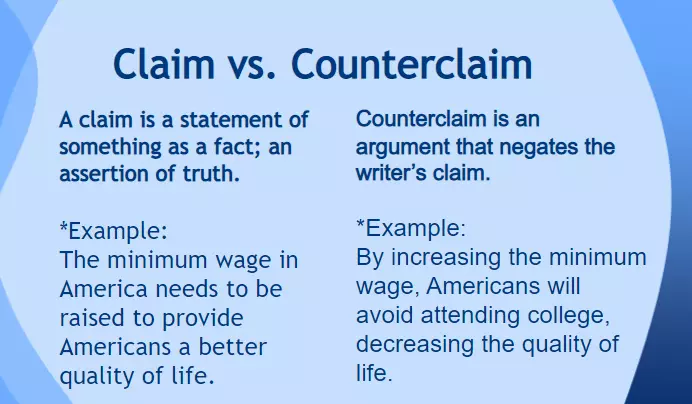
Most of your paper will be dedicated to proving your claim to the reader so that they can agree with your point of view.
A good claim should be arguable and at times controversial to allow the readers to think otherwise about your perspectives as the writer.
It can also come up with their interpretations concerning the topic.
Because of this, the essay will be based on the claim and you will demonstrate why your claim is accepted. On the other hand, a counterclaim is a statement of opposition that will allow the readers to perceive the whole picture of the arguments.
Though this is the case, the counterclaim demonstrates that the writer has anticipated arguments against their claim and has provided proof, through the counterclaim, that the readers’ perspectives are false or weak.
As such, when the counterclaim is stated, it is addressed concerning its weaknesses or limitations. This enhances the claim’s strength.
How to Write a Good Counterclaim in an Essay
If you wish to write a good counterclaim, make sure that it takes the form of two stages.

The first stage is where you go against your claim or argument so that you can challenge it and the second stage is where you turn back to your claim or argument to re-affirm it.
When writing a good counterclaim, you imagine that some of your readers will be skeptical and you have to make them agree with you.
For example, if you want to present a counterclaim showing that there was a problem with how you demonstrated your claims, like an unwarranted assumption, certain evidence was played down or ignored, and so on, you can support the counterclaim by presenting the disadvantages or drawbacks of the issues with the presentation. Then, give an alternative proposal or alternative that would make more sense to the readers.
To refute the counterclaim, you announce with words like ‘yet’, ‘but’, ‘however’, ‘still’, or ‘nevertheless’ to indicate that you are about to show why the counterclaim is wrong. Acknowledge that it is a good claim but demonstrate that yours might help the argument more.
Where to Write a Counterclaim in an Essay
A counterclaim can be included anywhere within the body of the essay except the conclusion. There are some cases where you can write a counterclaim at the second last sentence of the introduction paragraph followed by the thesis statement which acts as the refutation.
You can also write a counterargument after the introduction to show the anticipated reaction to your point of view before moving forward with writing your actual claims.
Moving forward, the reason why you cannot place the counterclaim within the conclusion is that you have to include a rebuttal paragraph or statements after you have written the counterclaim. Therefore, a counterclaim located at the conclusion will miss the rebuttal paragraph or statements.
However, argumentative essays can take different structures. Even though such essays will have a basic structure of an introduction, body paragraphs, and a conclusion, the differences will occur within the body paragraphs. Such differences dictate where the counterclaim(s) are located.
There is a structure where the counterclaims are located within all the body paragraphs. In this case, you will write your claim, followed by a counterclaim, and then a rebuttal. This means that for every claim you present to support your thesis, there will be a counterclaim and a rebuttal.
The most common structure is where you present your claims and present the counterclaim(s) before the conclusion. The counterclaim is immediately followed by a rebuttal.
Dos and Don’ts of Writing a Counterclaim
When it comes to the dos of writing a counterclaim, always ensure that it is followed by a rebuttal to demonstrate that your claims are superior to it. Secondly, courteously present your counterclaims to avoid upsetting the reader.

Acknowledge the anticipated arguments from the readers.
Demonstrate that the readers’ points of view are valid but your perspective makes more sense.
Finally, appeal to the logic of the readers through the use of valid evidence.
Concerning the don’ts when writing a counterclaim, do not include a counterargument just for the sake of it.
Make sure that the counterargument is valid in its own right and it is verifiable through evidence.
This is because your readers will also use logic and evidence when thinking about your claims. Secondly, do not use a disrespectful or uncourteous tone when addressing the other side of the argument.
Examples of Counterclaims
A counterclaim in a separate paragraph.
Counterclaim: “Opponents argue that after-school sports can increase the likelihood of sports-related injuries (Bancroft, 2018). Even minor injuries sustained from participation in after-school sports increase absent rates and the expense of creating injury reports for students (Sizemore, 2019)” .
Refutation: “Although students do suffer both serious and minor injuries in after-school sports, these injuries are quite rare (Kinney, 2016) .
Embedded Within a Paragraph
“Without free after-school sports programs, many students would still play sports without adult supervision and even more injuries would result”. Counterclaim : “However, some people would argue that after-school sports can increase the likelihood of sports-related injuries (Sizemore 2019)”. Refutation: “Although students do suffer both serious and minor injuries in after-school sports, without school-sponsored sports, the likelihood of more injuries from less supervised recreational leagues or privately sponsored leagues with fewer safety regulations would be much worse” .
How Long Should a Counterclaim Be?
A counterclaim can be as long as a paragraph if it appears after the introduction paragraph or at the end of the body before the conclusion. However, if a counterclaim is located within a paragraph, it can be a few sentences long (2-3).
However, the length of a counterclaim depends on the length of a claim in general. You can learn more about how to write a claim paragraph in that guide so that you can learn the two in general.
How many Counterclaims can you Put?
This depends on the structure of the essay. If the counterclaim appears after the introduction or before the conclusion, then it will only be one. However, if it is embedded within paragraphs, then they will be as many as the supportive augments.
This is because they will be used to refute every claim made within the body paragraph. If your supporting claims are 5 then the counterclaims will be 5 and so on.
Check out how to write college essays in our guide that we hope will lead you to score well.

Joseph is a freelance journalist and a part-time writer with a particular interest in the gig economy. He writes about schooling, college life, and changing trends in education. When not writing, Joseph is hiking or playing chess.
How to Write an Effective Counterclaim in 5 Steps
So, you’re laboring over a killer argumentative essay — and you want to make absolutely sure that you have all your bases covered? Your essay absolutely needs at least one counterclaim with a rebuttal if you are determined to make it the best it can be.
Unless you are already an experiences essayist, however, it can prove tough to write a solid counterclaim. Watch and learn — with this guide, you’ll get ready to write a powerful counterclaim in no time!
Essay Counterclaim: The Basics
The “too long; didn’t read” version is as follows — a counterclaim is a rhetorical tool used in essay writing. You present a viewpoint for which you are not arguing in a counterclaim, and then proceed to refute it; explaining why people should disagree with the opposing argument and agree with you, instead.
As you’re writing your essay, you will inevitably make various claims. Claims can be defined as debatable statements — the views for which you are arguing in your essay. Your thesis statement will be the main, overarching, claim you make in your essay, and this can be followed by multiple further claims in favor of your argument.
Let’s see this in action:
- Thesis: “Unleashed dogs are a serious public health concern in Masonville. Policy must be amended to make it mandatory for all dogs to be leashed, at all times, and fines must be imposed on those who fail to comply.”
- Claim: “Unleashed dogs have decimated the local deer population.”
- Claim: “5 children and an elderly person have sustained serious dog bites that required medical attention in the last three years.”
- Claim: “Data from other jurisdictions shows that imposing penalties for unleashed dogs reduces incidents with dogs immensely.”
If your essay looks something like this, you’re building a compelling case. You have defined your viewpoint, offered arguments that lead to a conclusion, and you have also shared data that your proposed solution could work.
What’s missing?
To truly make a convincing argument, you have to show that you understand the subject matter you are tackling deeply — something that inevitably includes listening to the opposing side in the argument.
That is where your counterclaim comes in. A counterclaim can be defined as a claim that directly opposes yours.
If your reaction is “Wait, what!? I have to argue against myself?” right now, hold on. There are multiple strong reasons to include a counterclaim in your essay. Here’s a look:
- By including a counterclaim, or indeed multiple, you show that you don’t have tunnel vision. You have also considered the other side.
- Readers who support the other side of the argument will likely react with a “Yes, that’s right!”. This has the effect of making them feel heard, which in turn makes them more open to listening to you.
- After all that, you can — finally — respectfully and artfully refute the counterclaim. You understand the opposing viewpoint and you have deeply considered its merits, but you disagree. Lay out why, and why those who previously agreed with the opposing argument might want to consider coming over to your side, instead.
Let’s see that in action again:
Many dog owners claim that leashing dogs robs them of the ability to run around and have fun — something they consider integral to their dogs’ health and wellbeing. While it is certainly true that dogs need exercise, long leashes allow for plenty of freedom of movement. Dog parks, where dogs could run free, are another possible solution in this case.
Claim vs Counterclaim: What Is the Difference?
The difference between a claim and a counterclaim can best be summed up by saying that a claim is used to argue the position you are defending in your essay, while a counterclaim takes the opposing viewpoint. A counterclaim is an argument against your argument, in other words.
That is not the only difference between the two. To make an effective claim, a writer simply has to:
- Make the claim.
- Provide evidence or logical arguments supporting the claim.
- Where desired, follow this with rhetorical tools such as appeals to emotion or logic to further convince the audience.
A counterclaim requires more elements:
- The counterclaim itself — which states an opposing argument.
- Evidence that people in fact hold this view is very much welcomed; to make a good counterclaim, you cannot simply lay out positions that are almost never taken.
- An explanation as to why people may hold this view.
- Finally, a rebuttal, in which you explain why the counterclaim is weak, and your original position is correct.
How to Write an Effective Counterclaim: Step-by-Step
Writing an effective counterclaim — or even several, as you may be called to do in longer essays — can be challenging. That is particularly true if you fervently believe in the argument you are making, and have a hard time understanding how anyone could disagree with it.
However, it is important to remain as objective as possible as you craft a counterclaim for your essay. Here is a look at the process you may use to decide on a good counterclaim.
- Deciding Where to Place Your Counterclaim
It is typically very effective to open your essay with a compelling hook, which may consist of a powerful anecdote, statistics, or a dramatic introduction to a pressing problem. You will then want to introduce your thesis statement, and begin making claims — which you back up with evidence and further arguments.
Your counterclaim, or counter claims, should be placed after this portion of your essay. In short essays, that means it will be somewhere near the end. However, you will want to summarize your main argument succinctly and write a memorable conclusion in the paragraphs that follow your counterclaim paragraph.
- Deciding How Long Your Counterclaim Should Be
The length of a counterclaim, and indeed the number of counterclaims you decide to include, depends on the target length of your essay. You will typically require at least a short paragraph to be able to do your counterclaim justice, because you are not simply stating that some people disagree with your argument. You also want to explain why.
In some cases, you will be able to write a short rebuttal in the same paragraph. In others, you may choose to refute the counterclaim in the next paragraph.
- Researching Opposing Viewpoints
To write an effective counterclaim, it is important to understand the arguments that may be used to oppose your claims. Don’t simply turn your claim or thesis statement on its head, but research why people disagree with the argument you are making, and on what basis. Where possible, try to find out how common the view you are portraying in your counterclaim is.
- Presenting the Opposing Viewpoint Fairly
Once you immerse yourself in the types of arguments people who disagree with your thesis make, and truly understand where they are coming from, you are ready to craft a good counterclaim. Try this exercise first. Imagine what you would write if you sincerely held the opposing view, and then go ahead and do it.
- Writing Your Counterclaim Paragraph
Before presenting the counterclaim, you will need to introduce the fact that you will be doing this by making a smooth transition in your writing. Good ways to start your counterclaim paragraph include:
- “Critics have argued that…”
- “Some people may conclude that”
- “On the other side of the argument, people are concerned that…”
- “The opposing viewpoint states that…”
Once you have stated the alternative view, go ahead and describe why that view is held. Present evidence.
You can now either start a new paragraph to write a rebuttal, or — if you can keep it short — do so in the same paragraph.
A rebuttal can include:
- Reasons why the opposing view you presented in your counterclaim is weak or false.
- An acknowledgment that the views presented in the counterclaim have merit, but there is a solution that would render the concerns the opposing side has baseless.
- An explanation that the views presented in the counterclaim are exceedingly rare, or the benefits of your argument outweigh the risks the counterclaim sets forth.
Additional Tips on Writing a Counterclaim
If you have followed along so far, you are almost ready to make a very effective counterclaim, complete with a refutation. You may even have penned a draft. So far, so good, but you do have some additional things to watch out for as you write your counterclaim:
- Be objective in the language you use. Do not state that you disagree with the counterclaim, or argue that some people “erroneously believe that…”, for example. Simply present the counterclaim as an alternative opinion.
- Be fair. Do not caricature the viewpoint you are presenting in your counterclaim. Do not use condescending language. When you share the opposing argument, do so using words that those who hold that view may, in fact, use.
- Don’t forget to include evidence. Your evidence can demonstrate that a significant percentage of people hold the view you address in your counterclaim, and it should also, where possible, back up the counterclaim. In the example we used earlier, regarding the benefits of allowing dogs to run around without being leashed, you could look for studies that show that dogs need a certain amount of physical exercise.
- Be fair in your rebuttal, too. The extent to which you do this depends on your aim. If you are writing a high school or college essay, you may simply prefer to throw some hard-hitting verbal punches. If, on the other hand, you are sincerely hoping to convince people who currently hold the alternative opinion you just described that you are right, you will have to be more careful. Validate their underlying concerns or values, and explain why your argument works within that context.
Does every essay need a counterclaim?
No. There are many kinds of essays. An expository essay, for instance, simply explores a topic, and will not need a counterclaim. A narrative essay shares the writer’s personal experience, and will not require a counterclaim. Counterclaims have an important place in argumentative essays, which require the writer to demonstrate that they understand the topic thoroughly and have considered all sides.
How many counterclaims should I include?
If you make multiple claims, you may choose to write a counterclaim for each of them. Depending on the length of your essay, you may even decide to include multiple counterclaims for each claim.
Related posts:
- How to Write an Effective Claim (with Examples)
- How to Write a Counter Argument (Step-by-Step Guide)
- 14 Tips to Help you Write An Essay Fast
- Going to the Dogs - Meaning, Origin and Usage
- How to Write in the First Person Effectively
- How To Write A Movie Title In An Essay
Leave a Reply Cancel reply
Your email address will not be published. Required fields are marked *
- Link to facebook
- Link to linkedin
- Link to twitter
- Link to youtube
- Writing Tips
A Guide to Rebuttals in Argumentative Essays
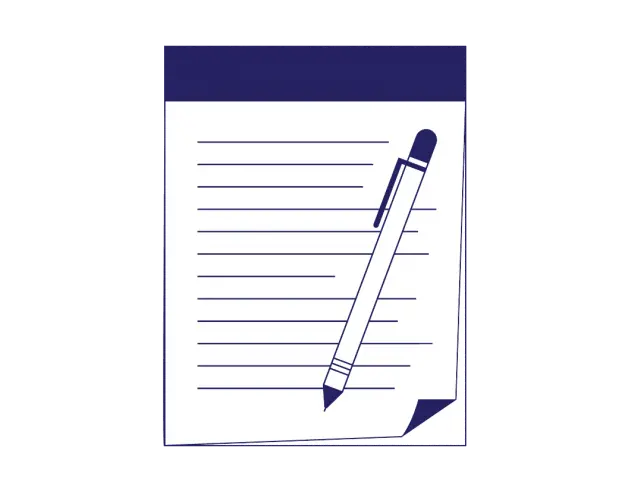
4-minute read
- 27th May 2023
Rebuttals are an essential part of a strong argument. But what are they, exactly, and how can you use them effectively? Read on to find out.
What Is a Rebuttal?
When writing an argumentative essay , there’s always an opposing point of view. You can’t present an argument without the possibility of someone disagreeing.
Sure, you could just focus on your argument and ignore the other perspective, but that weakens your essay. Coming up with possible alternative points of view, or counterarguments, and being prepared to address them, gives you an edge. A rebuttal is your response to these opposing viewpoints.
How Do Rebuttals Work?
With a rebuttal, you can take the fighting power away from any opposition to your idea before they have a chance to attack. For a rebuttal to work, it needs to follow the same formula as the other key points in your essay: it should be researched, developed, and presented with evidence.
Rebuttals in Action
Suppose you’re writing an essay arguing that strawberries are the best fruit. A potential counterargument could be that strawberries don’t work as well in baked goods as other berries do, as they can get soggy and lose some of their flavor. Your rebuttal would state this point and then explain why it’s not valid:
Read on for a few simple steps to formulating an effective rebuttal.
Step 1. Come up with a Counterargument
A strong rebuttal is only possible when there’s a strong counterargument. You may be convinced of your idea but try to place yourself on the other side. Rather than addressing weak opposing views that are easy to fend off, try to come up with the strongest claims that could be made.
In your essay, explain the counterargument and agree with it. That’s right, agree with it – to an extent. State why there’s some truth to it and validate the concerns it presents.
Step 2. Point Out Its Flaws
Now that you’ve presented a counterargument, poke holes in it . To do so, analyze the argument carefully and notice if there are any biases or caveats that weaken it. Looking at the claim that strawberries don’t work well in baked goods, a weakness could be that this argument only applies when strawberries are baked in a pie.
Find this useful?
Subscribe to our newsletter and get writing tips from our editors straight to your inbox.
Step 3. Present New Points
Once you reveal the counterargument’s weakness, present a new perspective, and provide supporting evidence to show that your argument is still the correct one. This means providing new points that the opposer may not have considered when presenting their claim.
Offering new ideas that weaken a counterargument makes you come off as authoritative and informed, which will make your readers more likely to agree with you.
Summary: Rebuttals
Rebuttals are essential when presenting an argument. Even if a counterargument is stronger than your point, you can construct an effective rebuttal that stands a chance against it.
We hope this guide helps you to structure and format your argumentative essay . And once you’ve finished writing, send a copy to our expert editors. We’ll ensure perfect grammar, spelling, punctuation, referencing, and more. Try it out for free today!
Frequently Asked Questions
What is a rebuttal in an essay.
A rebuttal is a response to a counterargument. It presents the potential counterclaim, discusses why it could be valid, and then explains why the original argument is still correct.
How do you form an effective rebuttal?
To use rebuttals effectively, come up with a strong counterclaim and respectfully point out its weaknesses. Then present new ideas that fill those gaps and strengthen your point.
Share this article:
Post A New Comment
Got content that needs a quick turnaround? Let us polish your work. Explore our editorial business services.
3-minute read
What Is a Content Editor?
Are you interested in learning more about the role of a content editor and the...
The Benefits of Using an Online Proofreading Service
Proofreading is important to ensure your writing is clear and concise for your readers. Whether...
2-minute read
6 Online AI Presentation Maker Tools
Creating presentations can be time-consuming and frustrating. Trying to construct a visually appealing and informative...
What Is Market Research?
No matter your industry, conducting market research helps you keep up to date with shifting...
8 Press Release Distribution Services for Your Business
In a world where you need to stand out, press releases are key to being...
How to Get a Patent
In the United States, the US Patent and Trademarks Office issues patents. In the United...

Make sure your writing is the best it can be with our expert English proofreading and editing.

Reading Skills
Developing claims and counterclaims.
- The Albert Team
- Last Updated On: December 27, 2023

What We Review
Introduction
When you’re diving into a persuasive speech, article, or essay, there are two key things to look out for: the claim and the counterclaim. The claim is basically what the author believes and wants you to agree with. It’s their main point or argument about a topic. On the flip side, the counterclaim is the opposite stance. It’s a position that challenges or disagrees with the author’s claim.
Getting a grip on both claims and counterclaims is super important. Why? Because it helps you become more savvy when you read different nonfiction texts. You’ll be able to spot what the writer is arguing for (the claim) and what arguments might go against it (the counterclaim). Plus, it’s a great skill for when you start making your own arguments in essays or discussions. Understanding both sides of a topic makes your own arguments stronger and more balanced.
Understanding Claims
A claim is what the author or speaker is trying to convince you of, their main point or argument. But it’s not enough just to state a claim; it needs to be backed up with solid evidence and also be ready to face counterclaims (which are basically the opposite arguments).
There are different types of claims, and knowing them can help you understand and make better arguments:
- Fact : This type of claim focuses on answering questions such as, “is it true,” “did it happen,” or “who is this person?”. For example, a sample fact claim could be: “Lebron James’ I Promise School in Akron, OH provides an effective model for meeting students’ needs on educational, physical, emotional, and social levels.”
- Definition : This type of claim focuses on answering questions such as, “what does this term mean in this context?” For example, a sample definition claim could be: “Being someone’s friend on social media has an entirely different meaning than being in a real-life friendship.”
- Value : This type of claim focuses on answering questions such as, “is this good or bad?” or “how do we define what is good or what is bad?” For example, a sample value claim could be: “Cell phones should not be allowed in high school because these devices detract from student performance and affect students’ emotional well-being.”
- Cause : This type of claim answers questions such as, “what is the cause?” and “what is the effect?” For example, a sample cause claim could be: “By reintroducing home economics classes into high school curriculum, students will be more prepared for adult responsibilities and less dependent on their parents after they graduate high school.”
- Comparison : This type of claim answers questions such as, “what can we learn from comparing these two topics?” For example, a comparison claim could be: “When placed side-by-side, Marvel and DC comic book universes reveal much closer similarities between one another than one would expect.”
- Policy : This type of claim answers questions such as, “what type of policies would benefit this group?” or “how should various policies be enforced in different circumstances?” For example, a policy claim could be: “Employers must provide new mothers with one year of paid leave with a guarantee of employment following this period of absence.”

No matter how strong a claim sounds, it must have a firm foundation. Otherwise, it is easily toppled by opposing counterclaims. The foundation of an effective claim is sufficient and relevant supporting evidence. Be sure to include the rebuttal of counterclaims with further supporting evidence. Sufficient supporting evidence means the writer has enough evidence to support their claim. But be careful – too much information can make your main point hard to see. And always be ready to address counterclaims with more evidence. This makes your argument stronger and shows you’ve thought about all sides of the issue.
Developing Counterclaims
A counterclaim is an opposing argument that seeks to disprove or weaken another claim.
Just like there are many different kinds of claims, there are just as many variations of counterclaims. For example, if someone wanted to counter the “Fact Claim” above, “Lebron James’ I Promise School in Akron, OH provides an effective model for meeting students’ needs on educational, physical, emotional, and social levels,” they would use sufficient and relevant evidence to argue that “Lebron James’ I Promise School in Akron, OH does not provide an effective model for meeting students’ needs on educational, physical, emotional, and social levels.”

Dealing with different viewpoints, especially on sensitive topics, can be tough. It’s not always easy to listen to opinions that go against what you believe. But here’s the thing – understanding and considering these opposing perspectives can actually make your own argument stronger. It shows that you’re open-minded and have thought about the issue from all angles. Plus, it teaches a valuable lesson: it’s totally okay to agree to disagree. Not everyone will see things the way you do, and that’s alright. In the world of persuasive writing and speaking, being able to develop and understand counterclaims is a key skill that can really take your arguments to the next level.
In school, you might practice making claims and counterclaims on topics that don’t seem super important to you. But as you grow and start forming your own strong opinions on different subjects, you’ll see how this skill really comes into play in the real world.
One thing you’ll learn is that introducing opposite opinions can sometimes lead to disagreements or conflicts. That’s just part of life. But here’s the key: to be a really good communicator, whether in your personal life or in the workplace, it’s important to know how to peacefully coexist with people who have different views.

Understanding how to discuss and debate ideas respectfully is a super valuable skill. It helps you express your own thoughts clearly while also being open to hearing what others have to say. This doesn’t mean you have to change your opinions, but being able to consider different perspectives can make you a more thoughtful and well-rounded thinker. So, as you continue to shape your views on various topics, remember that being able to agree to disagree is a part of growing into a skilled and respectful communicator.
Practice Makes Perfect
In addition to the recommended activities above, Albert provides a wide range of texts for students to analyze and interpret. For emerging readers, check out our Short Readings course, which uses short passages to reinforce fundamental reading skills. Readers at all ability levels may enjoy our Leveled Readings course. It offers Lexile® leveled passages focused on a unifying essential question. This allows you to keep all students on the same page regardless of reading level. Learn more about the Lexile Framework here !
For authentic practice, check out our Essential Readings in Literature course. This course provides an overview of the core texts that American students often read in English class. Each text is broken down by skill, ensuring that students approach their reading from every angle.
With our easy-to-use interface and informative feedback, Albert.io is the perfect tool for reinforcing close reading skills and helping students develop a deeper understanding of the texts they encounter.
Interested in a school license?
Popular posts.
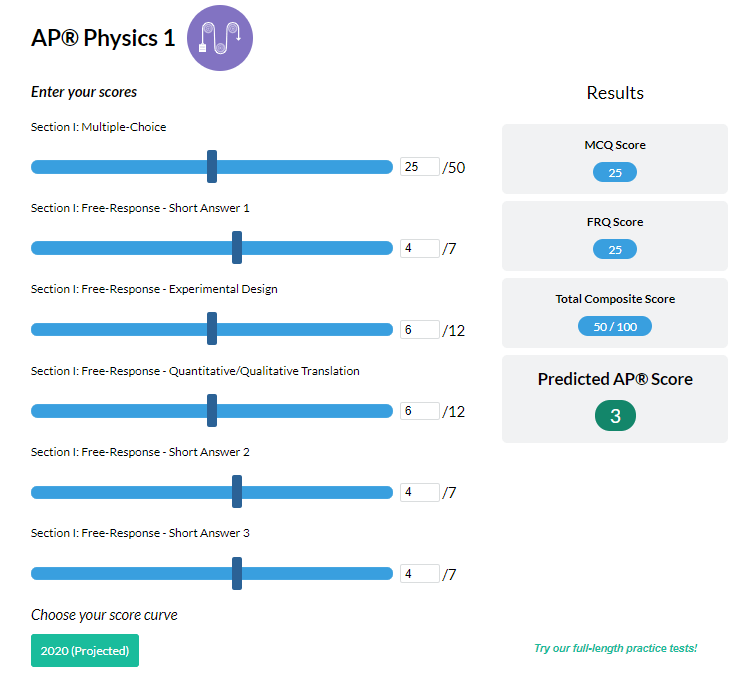
AP® Score Calculators
Simulate how different MCQ and FRQ scores translate into AP® scores
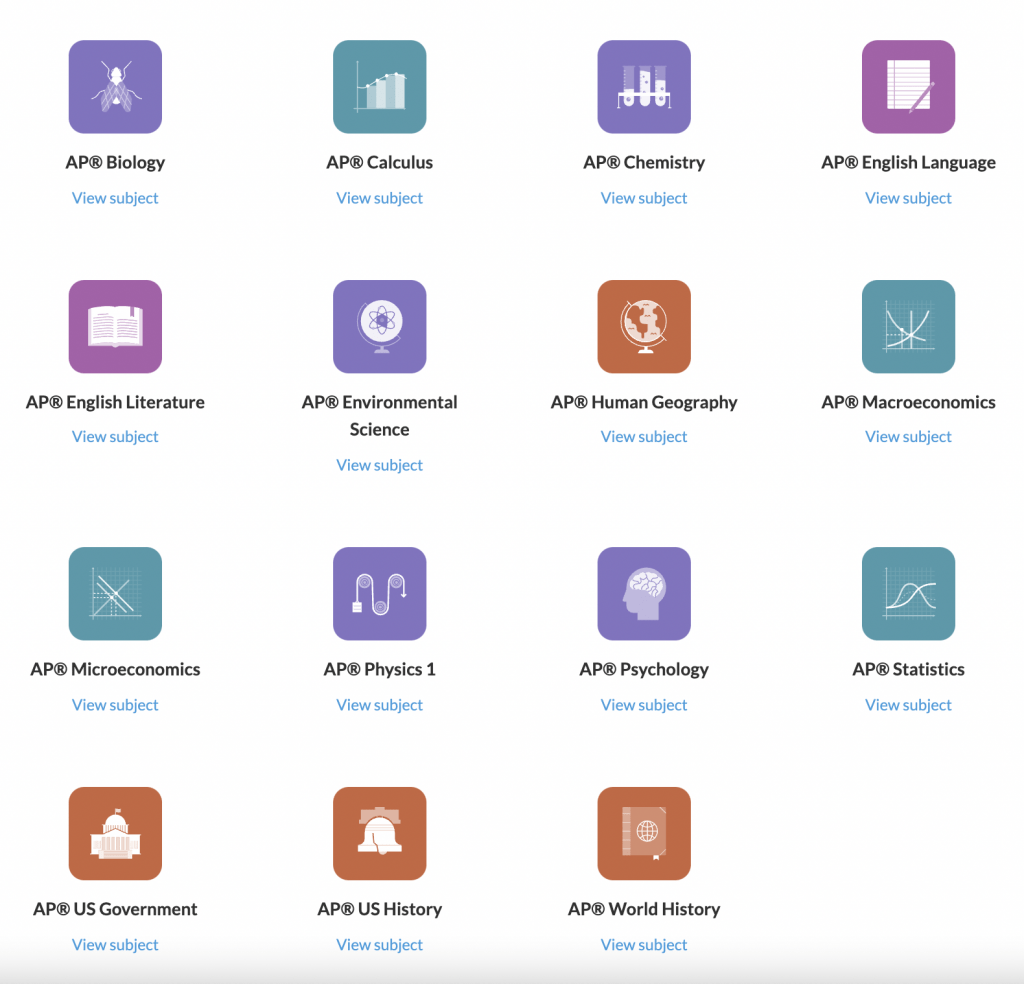
AP® Review Guides
The ultimate review guides for AP® subjects to help you plan and structure your prep.

Core Subject Review Guides
Review the most important topics in Physics and Algebra 1 .
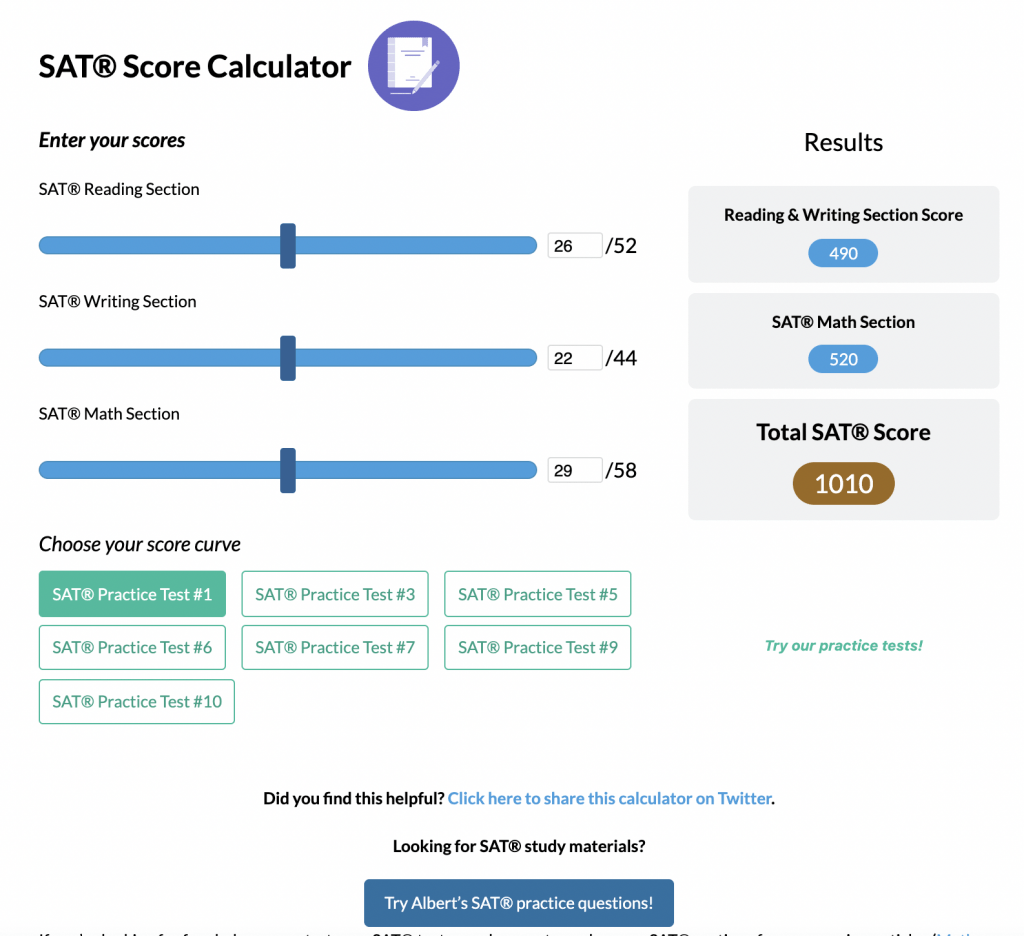
SAT® Score Calculator
See how scores on each section impacts your overall SAT® score
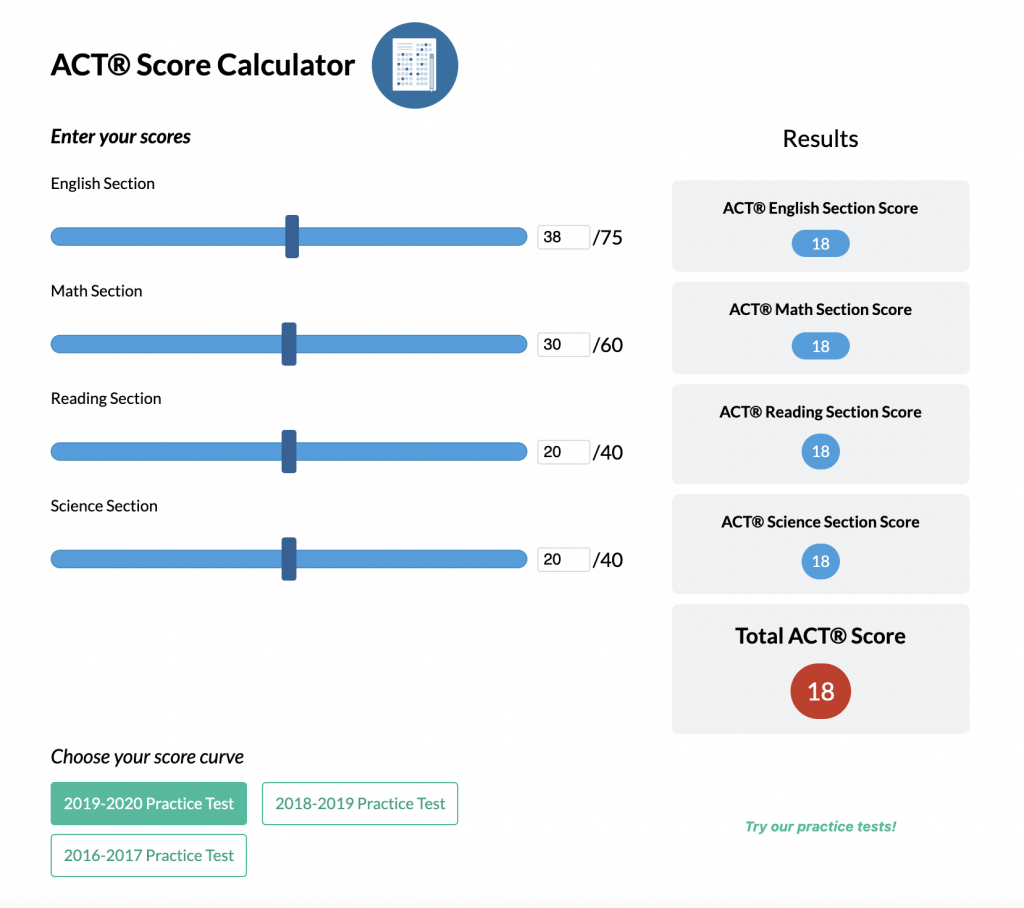
ACT® Score Calculator
See how scores on each section impacts your overall ACT® score
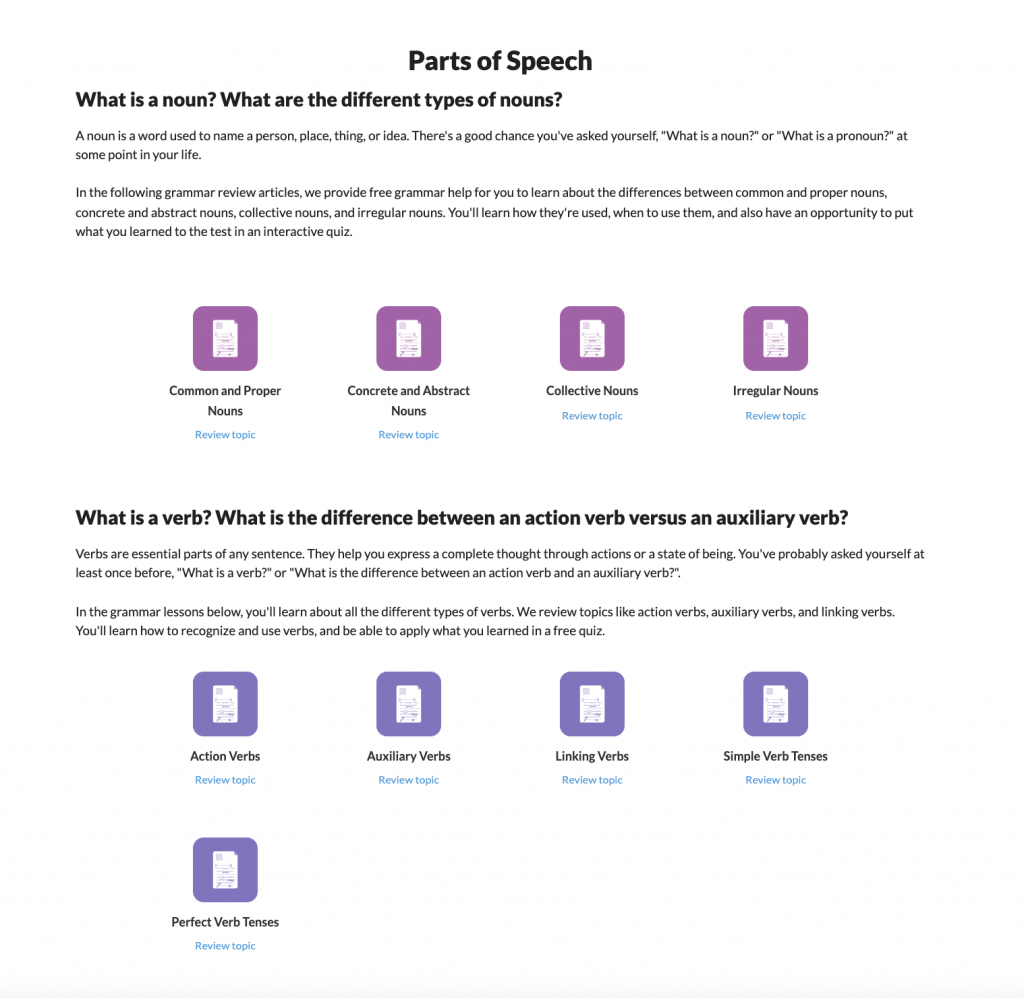
Grammar Review Hub
Comprehensive review of grammar skills
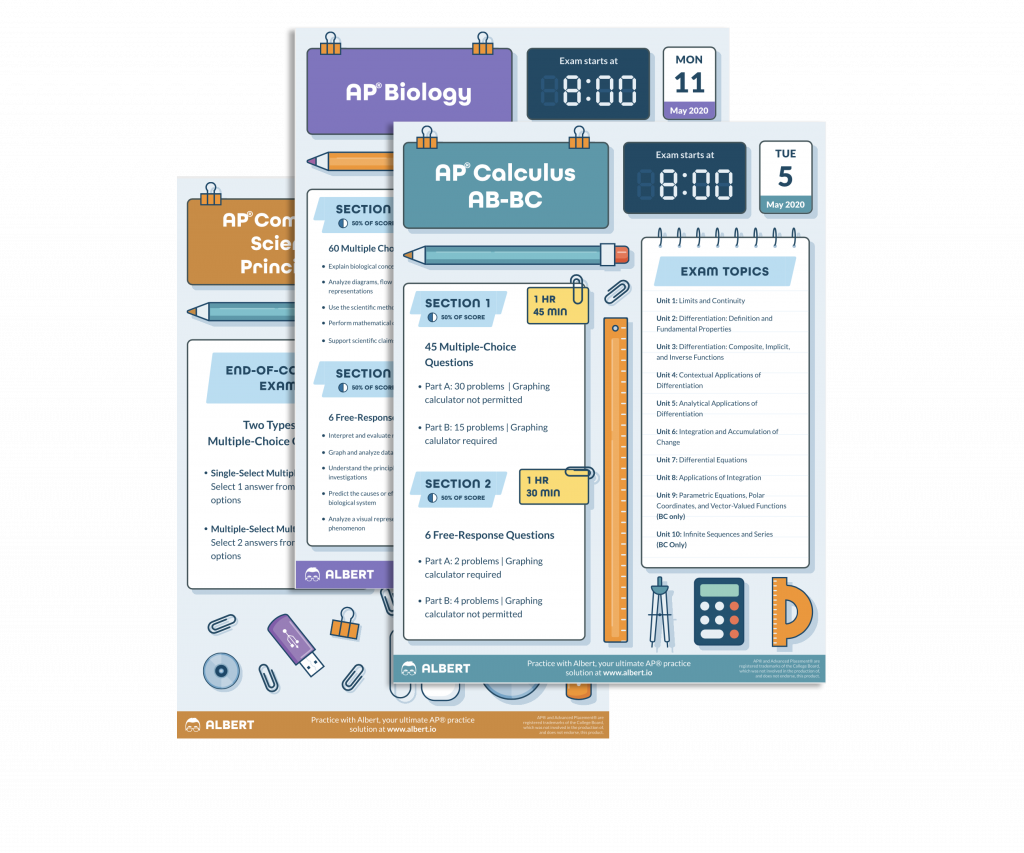
AP® Posters
Download updated posters summarizing the main topics and structure for each AP® exam.
Interested in a school license?

Bring Albert to your school and empower all teachers with the world's best question bank for: ➜ SAT® & ACT® ➜ AP® ➜ ELA, Math, Science, & Social Studies aligned to state standards ➜ State assessments Options for teachers, schools, and districts.

- Walden University
- Faculty Portal
Writing a Paper: Responding to Counterarguments
Basics of counterarguments.
When constructing an argument, it is important to consider any counterarguments a reader might make. Acknowledging the opposition shows that you are knowledgeable about the issue and are not simply ignoring other viewpoints. Addressing counterarguments also gives you an opportunity to clarify and strengthen your argument, helping to show how your argument is stronger than other arguments.
Incorporating counterarguments into your writing can seem counterintuitive at first, and some writers may be unsure how to do so. To help you incorporate counterarguments into your argument, we recommend following the steps: (a) identify, (b) investigate, (c) address, and (d) refine.
Identify the Counterarguments
First you need to identify counterarguments to your own argument. Ask yourself, based on your argument, what might someone who disagrees counter in response? You might also discover counterarguments while doing your research, as you find authors who may disagree with your argument.
For example, if you are researching the current opioid crisis in the United States, your argument might be: State governments should allocate part of the budget for addiction recovery centers in communities heavily impacted by the opioid crisis . A few counterarguments might be:
- Recovery centers are not proven to significantly help people with addiction.
- The state’s money should go to more pressing concerns such as...
- Establishing and maintaining a recovery center is too costly.
- Addicts are unworthy of assistance from the state.
Investigate the Counterarguments
Analyze the counterarguments so that you can determine whether they are valid. This may require assessing the counterarguments with the research you already have or by identifying logical fallacies . You may also need to do additional research.
In the above list, the first three counterarguments can be researched. The fourth is a moral argument and therefore can only be addressed in a discussion of moral values, which is usually outside the realm of social science research. To investigate the first, you could do a search for research that studies the effectiveness of recovery centers. For the second, you could look at the top social issues in states around the country. Is the opioid crisis the main concern or are there others? For the third, you could look for public financial data from a recovery center or interview someone who works at one to get a sense of the costs involved.
Address the Counterarguments
Address one or two counterarguments in a rebuttal. Now that you have researched the counterarguments, consider your response. In your essay, you will need to state and refute these opposing views to give more credence to your argument. No matter how you decide to incorporate the counterargument into your essay, be sure you do so with objectivity, maintaining a formal and scholarly tone .
Considerations when writing:
- Will you discredit the counteragument by bringing in contradictory research?
- Will you concede that the point is valid but that your argument still stands as the better view? (For example, perhaps it is very costly to run a recovery center, but the societal benefits offset that financial cost.)
- Placement . You can choose to place the counterargument toward the beginning of the essay, as a way to anticipate opposition, or you can place it toward the end of the essay, after you have solidly made the main points of your argument. You can also weave a counterargument into a body paragraph, as a way to quickly acknowledge opposition to a main point. Which placement is best depends on your argument, how you’ve organized your argument, and what placement you think is most effective.
- Weight . After you have addressed the counterarguments, scan your essay as a whole. Are you spending too much time on them in comparison to your main points? Keep in mind that if you linger too long on the counterarguments, your reader might learn less about your argument and more about opposing viewpoints instead.
Refine Your Argument
Considering counterarguments should help you refine your own argument, clarifying the relevant issues and your perspective. Furthermore, if you find yourself agreeing with the counterargument, you will need to revise your thesis statement and main points to reflect your new thinking.
Templates for Responding to Counterarguments
There are many ways you can incorporate counterarguments, but remember that you shouldn’t just mention the counterargument—you need to respond to it as well. You can use these templates (adapted from Graff & Birkenstein, 2009) as a starting point for responding to counterarguments in your own writing.
- The claim that _____ rests upon the questionable assumption that _____.
- X may have been true in the past, but recent research has shown that ________.
- By focusing on _____, X has overlooked the more significant problem of _____.
- Although I agree with X up to a point, I cannot accept the overall conclusion that _____.
- Though I concede that _____, I still insist that _____.
- Whereas X has provided ample evidence that ____, Y and Z’s research on ____ and ____ convinces me that _____ instead.
- Although I grant that _____, I still maintain that _____.
- While it is true that ____, it does not necessarily follow that _____.
Graff, G., & Birkenstein, C. (2009). They say/I say: The moves that matter in academic writing (2 nd ed.). Norton.
Didn't find what you need? Email us at [email protected] .
- Previous Page: Addressing Assumptions
- Next Page: Revising
- Office of Student Disability Services
Walden Resources
Departments.
- Academic Residencies
- Academic Skills
- Career Planning and Development
- Customer Care Team
- Field Experience
- Military Services
- Student Success Advising
- Writing Skills
Centers and Offices
- Center for Social Change
- Office of Academic Support and Instructional Services
- Office of Degree Acceleration
- Office of Research and Doctoral Services
- Office of Student Affairs
Student Resources
- Doctoral Writing Assessment
- Form & Style Review
- Quick Answers
- ScholarWorks
- SKIL Courses and Workshops
- Walden Bookstore
- Walden Catalog & Student Handbook
- Student Safety/Title IX
- Legal & Consumer Information
- Website Terms and Conditions
- Cookie Policy
- Accessibility
- Accreditation
- State Authorization
- Net Price Calculator
- Contact Walden
Walden University is a member of Adtalem Global Education, Inc. www.adtalem.com Walden University is certified to operate by SCHEV © 2024 Walden University LLC. All rights reserved.
Questions? Call us:
Email:
- How it works
- Testimonials
Essay Writing
- Essay service
- Essay writers
- College essay service
- Write my essay
- Pay for essay
- Essay topics
Term Paper Writing
- Term paper service
- Buy term papers
- Term paper help
- Term paper writers
- College term papers
- Write my term paper
- Pay for term paper
- Term paper topic
Research Paper Writing
- Research paper service
- Buy research paper
- Research paper help
- Research paper writers
- College research papers
- Write my research paper
- Pay for research paper
- Research paper topics
Dissertation Writing
- Dissertation service
- Buy dissertation
- Dissertation help
- Dissertation writers
- College thesis
- Write my dissertation
- Pay for dissertation
- Dissertation topics
Other Services
- Custom writing services
- Speech writing service
- Movie review writing
- Editing service
- Assignment writing
- Article writing service
- Book report writing
- Book review writing
Popular request:
How to write counterclaim: essential guide.
October 20, 2021
Are you trying to address your opinion and convince someone of your point of view? A counterclaim is what you need! A claim is an idea or an opinion that someone stands by. A counterclaim, however, is an opposing point of view about the concept. A strategic argumentative essay defines what the other side may say and explains why their claim is wrong; this is a counterclaim.

A counterclaim is included in argumentative writing and thesis to convince the reader to accept your claim. It’s essential to craft a good counterclaim to convince and get the reader on your side. The blog will provide you with complete insight into everything you need to know about writing counterclaims.
What is a Counterclaim in Writing?
A counterclaim is the other side of the argument or your original claim. In your claim, you make clear what you plan to prove. The counterclaim paragraph shows the opponent’s side of viewpoint and defines it in a way that seems weak and invalid.
The main aim behind the counterclaim is to convince the reader of your point of view. Hence, it’s essential to write a strong counterclaim paragraph to answer all the potential arguments the reader might have. A counterclaim essay, if done well, shows that the writer has considered both sides of the picture, which strengthens its position. Argumentative writing, thesis, or any other assignments that may involve convincing the audience in favor of your point of view can Use counterclaims to persuade the audience of the writer’s opinion. Any form of writing that involves more than one point of you can use claims and counterclaims to simplify the situation.
An argumentative essay is written in the following steps: Claim Counterclaim/ Counterclaims Rebuttal
Learning how to draft counterclaims is essential for every student. Individuals may need to convince the audience of their point of view when they step into real life. If you find yourself in any form of debate, you will always have a claim to fight for. You will have to create counterclaims to tell the audience about all the aspects that you have considered and then let them know the best possible option through a rebuttal.
The concept of counterclaims is also helpful for Law and business students in attaining their degrees. For law students, many cases may require a lawyer to draft a substantial counterclaim and rebuttal for the opponent in the legal issues. Likewise, in the business field, the concept of counterclaim may help the business evaluate the effectiveness of each contract. Also, considering all the contradictory aspects of your claim in any form of writing creates a good impression. The writer appears to be thoughtful, and just by considering and mentioning all the arguments, there may be present against his claim.
Claims vs. Counterclaims
How to find counterclaim.
There are a few steps and options to consider when trying to find a counterclaim:
- You need to identify the target audience that will be most affected by the claim.
- After you have identified your target audience, you can do quick questioning from an individual representing each group against their problems with your claim.
- Meanwhile, the writer should also form an idea of the possible alternative points of view the audience may have against the main claim.
- An alternative to finding a counterclaim is to note down all the disadvantages or alternative explanations that your target audience may have. However, the first option is more effective as this may allow you to find the counterclaims that may not be in your mind.
Where Do You Put A Counterclaim in an Essay?
When writing counterclaims in an essay, it’s essential to introduce the reader to the claim or the original argument. The claim is your point of view and can be argued by the reader. There is usually one main claim for which the argumentative essay revolves around. The claim is generally introduced in the introductory paragraph of your article or thesis. Right after the claim comes your counterclaim, which are the possible concerns the audience might have against your claim.
How to Introduce A Counterclaim?
There are various options you can consider on how to start a counterclaim paragraph, for example:
“On the other hand, some people say….” “Certainly, some people say….” “Admittedly, some people might say….” “A common counterpoint is often….”
You can start the counterclaim by explaining what counter-arguments the claim has. A good counterclaim paragraph will strengthen your essay and your position in the eyes of the reader.
How to Write a Counterclaim?
When writing a counterclaim, you need to imagine a skeptical reader and then draft your counterclaim paragraph. In the counterclaim, cite all the critics or sources who may resist your claim. The main aim behind the counterclaim is to address all the possible concerns of the reader to refute them. You can manage them by using the following words:
“However, some socials would certainly believe….” “Here, many feminists would argue….” “The opposing view is that….”
Moreover, it’s also vital that you evaluate your claim for all the possible problems and disadvantages that the claim may have. After introducing the counterclaim, discuss why it is incorrect. Also, use this part of the essay to think of alternate solutions that the claim may have in the following words:
“Alternatively, the issue could be viewed….” “Others may conclude….” “Despite this information….”
Explain the counterclaim as clearly and briefly as you can. It’s also an excellent strategy to prove where possible to weaken the opponent’s point of view.
How to Write A Good Counterclaim?
There are few tips that you can keep in mind when drafting a counterclaim.
- Never introduce your counterclaim in the introductory paragraph: It’s a rule you should abide by to create an effective essay. Stating a counterclaim in the introduction makes the essay look vague.
- When you start your counterclaim do not state it as right or wrong: Talk about why a counterclaim is believed instead of considering it right or wrong. Write a counterclaim in a way that the reader automatically turns in your favor.
- Always choose the best words for your counterclaim: You don’t want to sound rude to the reader so always choose the words wisely.
- It’s also essential to be just and unbiased as you write a counterclaim: To strengthen your thesis or argument you should always sound unbiased towards your opinion. The reader should know that you talking on the basis of facts and you don’t just want to implement your point of view.
- Always provide evidence that supports your counterclaim: Providing evidence where ever possible is another great way to write counterclaims. Providing evidence to support the counterclaim makes it easier to convince the reader of your claim.
What Is A Rebuttal?
Your response to the counterclaim is known as the rebuttal. In this section, you showcase the evidence that disagrees with the counterclaim. You present all your reasoning to shoot down the opponent’s disagreement and bring them to your side. The comebacks are always intense; likewise, a rebuttal paragraph should clearly explain why you support your claim. An excellent rebuttal might involve research to get the full knowledge of the facts. This will also allow you to resolve the argument in the best way.
How To Write Counterclaim And Rebuttal?
After the counterclaim argument, we come to the solution in the form of a rebuttal. In the counterclaim, the paragraph mentions the counterargument a reader might have for your claim. Then we move on to resolving the debate by writing a rebuttal. It’s crucial to sound polite as you start with your rebuttal. The tone of your essay can make a significant impact on the audience; therefore, make sure to respect the different options as you write a rebuttal. There are few examples of how you can begin your rebuttal:
“Although some people think..others understand….” “The Evidence, however, clearly supports the argument that….” “This may be an understandable concern, however….”
Moreover, provide a point-by-point reply to all the counterclaims you have outlined. Make sure not to miss out on any counterclaim otherwise, your essay will look incomplete and vague. Also, if you miss out on any counterclaim in your rebuttal, this may weaken your claim. Rebuttal marks the end of your argument, so it’s advised to finish it with friendly and positive sentences. The tone of the rebuttal will let the audience know that you have done your best to come up with the best solution to the counterclaim. Lastly, when your rebuttal is done and your argument is sorted, it’s time to review your work. Read your work from the perspective of the reviewer. Will they be satisfied by the explanations you have given? Is the text clear and easily comprehendible? If the answer to all these questions is yes, you can submit your paper or argument confidently.
Example Of Claim, Counterclaim, And Rebuttal
Claim: Cellphones should be banned from school as they distract students from learning Counterclaim: Others may say that students should carry cell phones for emergency purposes. Rebuttal: There are many other less disruptive ways parents can use to communicate with their kids.
Need Help Writing A Counterclaim?
Writing a counterclaim for your thesis can be tricky, and you may need help with your work. Our writing services offer assistance for writing counterclaims. They offer reliable and creative solutions for all your writing needs. Our writers make sure to do proper research for the content so that there is no room for error. Our researchers are well versed in the services they offer. The writing services can easily be accessed online and cater to all the assignments of college, university, and other classes. You can contact the writing services for a custom-based package if you hire them for a long-term basis. Even the professors can benefit from the writing services by getting their student’s work proofread.

Take a break from writing.
Top academic experts are here for you.
- How To Write An Autobiography Guideline And Useful Advice
- 182 Best Classification Essay Topics To Learn And Write About
- How To Manage Stress In College: Top Practical Tips
- How To Write A Narrative Essay: Definition, Tips, And A Step-by-Step Guide
- How To Write Article Review Like Professional
- Great Problem Solution Essay Topics
- Creating Best Stanford Roommate Essay
- Costco Essay – Best Writing Guide
- How To Quote A Dialogue
- Wonderful Expository Essay Topics
- Research Paper Topics For 2020
- Interesting Persuasive Essay Topics

English Current

ESL Lesson Plans, Tests, & Ideas
- North American Idioms
- Business Idioms
- Idioms Quiz
- Idiom Requests
- Proverbs Quiz & List
- Phrasal Verbs Quiz
- Basic Phrasal Verbs
- North American Idioms App
- A(n)/The: Help Understanding Articles
- The First & Second Conditional
- The Difference between 'So' & 'Too'
- The Difference between 'a few/few/a little/little'
- The Difference between "Other" & "Another"
- Check Your Level
- English Vocabulary
- Verb Tenses (Intermediate)
- Articles (A, An, The) Exercises
- Prepositions Exercises
- Irregular Verb Exercises
- Gerunds & Infinitives Exercises
- Discussion Questions
- Speech Topics
- Argumentative Essay Topics
- Top-rated Lessons
- Intermediate
- Upper-Intermediate
- Reading Lessons
- View Topic List
- Expressions for Everyday Situations
- Travel Agency Activity
- Present Progressive with Mr. Bean
- Work-related Idioms
- Adjectives to Describe Employees
- Writing for Tone, Tact, and Diplomacy
- Speaking Tactfully
- Advice on Monetizing an ESL Website
- Teaching your First Conversation Class
- How to Teach English Conversation
- Teaching Different Levels
- Teaching Grammar in Conversation Class
- Members' Home
- Update Billing Info.
- Cancel Subscription
- North American Proverbs Quiz & List
- North American Idioms Quiz
- Idioms App (Android)
- 'Be used to'" / 'Use to' / 'Get used to'
- Ergative Verbs and the Passive Voice
- Keywords & Verb Tense Exercises
- Irregular Verb List & Exercises
- Non-Progressive (State) Verbs
- Present Perfect vs. Past Simple
- Present Simple vs. Present Progressive
- Past Perfect vs. Past Simple
- Subject Verb Agreement
- The Passive Voice
- Subject & Object Relative Pronouns
- Relative Pronouns Where/When/Whose
- Commas in Adjective Clauses
- A/An and Word Sounds
- 'The' with Names of Places
- Understanding English Articles
- Article Exercises (All Levels)
- Yes/No Questions
- Wh-Questions
- How far vs. How long
- Affect vs. Effect
- A few vs. few / a little vs. little
- Boring vs. Bored
- Compliment vs. Complement
- Die vs. Dead vs. Death
- Expect vs. Suspect
- Experiences vs. Experience
- Go home vs. Go to home
- Had better vs. have to/must
- Have to vs. Have got to
- I.e. vs. E.g.
- In accordance with vs. According to
- Lay vs. Lie
- Make vs. Do
- In the meantime vs. Meanwhile
- Need vs. Require
- Notice vs. Note
- 'Other' vs 'Another'
- Pain vs. Painful vs. In Pain
- Raise vs. Rise
- So vs. Such
- So vs. So that
- Some vs. Some of / Most vs. Most of
- Sometimes vs. Sometime
- Too vs. Either vs. Neither
- Weary vs. Wary
- Who vs. Whom
- While vs. During
- While vs. When
- Wish vs. Hope
- 10 Common Writing Mistakes
- 34 Common English Mistakes
- First & Second Conditionals
- Comparative & Superlative Adjectives
- Determiners: This/That/These/Those
- Check Your English Level
- Grammar Quiz (Advanced)
- Vocabulary Test - Multiple Questions
- Vocabulary Quiz - Choose the Word
- Verb Tense Review (Intermediate)
- Verb Tense Exercises (All Levels)
- Conjunction Exercises
- List of Topics
- Business English
- Games for the ESL Classroom
- Pronunciation
- Teaching Your First Conversation Class
- How to Teach English Conversation Class
Argumentative Essays: The Counter-Argument & Refutation
An argumentative essay presents an argument for or against a topic. For example, if your topic is working from home , then your essay would either argue in favor of working from home (this is the for side) or against working from home.
Like most essays, an argumentative essay begins with an introduction that ends with the writer's position (or stance) in the thesis statement .
Introduction Paragraph
(Background information....)
- Thesis statement : Employers should give their workers the option to work from home in order to improve employee well-being and reduce office costs.
This thesis statement shows that the two points I plan to explain in my body paragraphs are 1) working from home improves well-being, and 2) it allows companies to reduce costs. Each topic will have its own paragraph. Here's an example of a very basic essay outline with these ideas:
- Background information
Body Paragraph 1
- Topic Sentence : Workers who work from home have improved well-being .
- Evidence from academic sources
Body Paragraph 2
- Topic Sentence : Furthermore, companies can reduce their expenses by allowing employees to work at home .
- Summary of key points
- Restatement of thesis statement
Does this look like a strong essay? Not really . There are no academic sources (research) used, and also...
You Need to Also Respond to the Counter-Arguments!
The above essay outline is very basic. The argument it presents can be made much stronger if you consider the counter-argument , and then try to respond (refute) its points.
The counter-argument presents the main points on the other side of the debate. Because we are arguing FOR working from home, this means the counter-argument is AGAINST working from home. The best way to find the counter-argument is by reading research on the topic to learn about the other side of the debate. The counter-argument for this topic might include these points:
- Distractions at home > could make it hard to concentrate
- Dishonest/lazy people > might work less because no one is watching
Next, we have to try to respond to the counter-argument in the refutation (or rebuttal/response) paragraph .
The Refutation/Response Paragraph
The purpose of this paragraph is to address the points of the counter-argument and to explain why they are false, somewhat false, or unimportant. So how can we respond to the above counter-argument? With research !
A study by Bloom (2013) followed workers at a call center in China who tried working from home for nine months. Its key results were as follows:
- The performance of people who worked from home increased by 13%
- These workers took fewer breaks and sick-days
- They also worked more minutes per shift
In other words, this study shows that the counter-argument might be false. (Note: To have an even stronger essay, present data from more than one study.) Now we have a refutation.
Where Do We Put the Counter-Argument and Refutation?
Commonly, these sections can go at the beginning of the essay (after the introduction), or at the end of the essay (before the conclusion). Let's put it at the beginning. Now our essay looks like this:
Counter-argument Paragraph
- Dishonest/lazy people might work less because no one is watching
Refutation/Response Paragraph
- Study: Productivity increased by 14%
- (+ other details)
Body Paragraph 3
- Topic Sentence : In addition, people who work from home have improved well-being .
Body Paragraph 4
The outline is stronger now because it includes the counter-argument and refutation. Note that the essay still needs more details and research to become more convincing.

Working from home may increase productivity.
Extra Advice on Argumentative Essays
It's not a compare and contrast essay.
An argumentative essay focuses on one topic (e.g. cats) and argues for or against it. An argumentative essay should not have two topics (e.g. cats vs dogs). When you compare two ideas, you are writing a compare and contrast essay. An argumentative essay has one topic (cats). If you are FOR cats as pets, a simplistic outline for an argumentative essay could look something like this:
- Thesis: Cats are the best pet.
- are unloving
- cause allergy issues
- This is a benefit > Many working people do not have time for a needy pet
- If you have an allergy, do not buy a cat.
- But for most people (without allergies), cats are great
- Supporting Details
Use Language in Counter-Argument That Shows Its Not Your Position
The counter-argument is not your position. To make this clear, use language such as this in your counter-argument:
- Opponents might argue that cats are unloving.
- People who dislike cats would argue that cats are unloving.
- Critics of cats could argue that cats are unloving.
- It could be argued that cats are unloving.
These underlined phrases make it clear that you are presenting someone else's argument , not your own.
Choose the Side with the Strongest Support
Do not choose your side based on your own personal opinion. Instead, do some research and learn the truth about the topic. After you have read the arguments for and against, choose the side with the strongest support as your position.
Do Not Include Too Many Counter-arguments
Include the main (two or three) points in the counter-argument. If you include too many points, refuting these points becomes quite difficult.
If you have any questions, leave a comment below.
- Matthew Barton / Creator of Englishcurrent.com
Additional Resources :
- Writing a Counter-Argument & Refutation (Richland College)
- Language for Counter-Argument and Refutation Paragraphs (Brown's Student Learning Tools)
EnglishCurrent is happily hosted on Dreamhost . If you found this page helpful, consider a donation to our hosting bill to show your support!
23 comments on “ Argumentative Essays: The Counter-Argument & Refutation ”
Thank you professor. It is really helpful.
Can you also put the counter argument in the third paragraph
It depends on what your instructor wants. Generally, a good argumentative essay needs to have a counter-argument and refutation somewhere. Most teachers will probably let you put them anywhere (e.g. in the start, middle, or end) and be happy as long as they are present. But ask your teacher to be sure.
Thank you for the information Professor
how could I address a counter argument for “plastic bags and its consumption should be banned”?
For what reasons do they say they should be banned? You need to address the reasons themselves and show that these reasons are invalid/weak.
Thank you for this useful article. I understand very well.
Thank you for the useful article, this helps me a lot!
Thank you for this useful article which helps me in my study.
Thank you, professor Mylene 102-04
it was very useful for writing essay
Very useful reference body support to began writing a good essay. Thank you!
Really very helpful. Thanks Regards Mayank
Thank you, professor, it is very helpful to write an essay.
It is really helpful thank you
It was a very helpful set of learning materials. I will follow it and use it in my essay writing. Thank you, professor. Regards Isha
Thanks Professor
This was really helpful as it lays the difference between argumentative essay and compare and contrast essay.. Thanks for the clarification.
This is such a helpful guide in composing an argumentative essay. Thank you, professor.
This was really helpful proof, thankyou!
Thanks this was really helpful to me
This was very helpful for us to generate a good form of essay
thank you so much for this useful information.
Leave a Reply Cancel reply
Your email address will not be published. Required fields are marked *
Purdue Online Writing Lab Purdue OWL® College of Liberal Arts
Organizing Your Argument

Welcome to the Purdue OWL
This page is brought to you by the OWL at Purdue University. When printing this page, you must include the entire legal notice.
Copyright ©1995-2018 by The Writing Lab & The OWL at Purdue and Purdue University. All rights reserved. This material may not be published, reproduced, broadcast, rewritten, or redistributed without permission. Use of this site constitutes acceptance of our terms and conditions of fair use.
This page summarizes three historical methods for argumentation, providing structural templates for each.
How can I effectively present my argument?
In order for your argument to be persuasive, it must use an organizational structure that the audience perceives as both logical and easy to parse. Three argumentative methods —the Toulmin Method , Classical Method , and Rogerian Method — give guidance for how to organize the points in an argument.
Note that these are only three of the most popular models for organizing an argument. Alternatives exist. Be sure to consult your instructor and/or defer to your assignment’s directions if you’re unsure which to use (if any).
Toulmin Method
The Toulmin Method is a formula that allows writers to build a sturdy logical foundation for their arguments. First proposed by author Stephen Toulmin in The Uses of Argument (1958), the Toulmin Method emphasizes building a thorough support structure for each of an argument's key claims.
The basic format for the Toulmin Method is as follows:
Claim: In this section, you explain your overall thesis on the subject. In other words, you make your main argument.
Data (Grounds): You should use evidence to support the claim. In other words, provide the reader with facts that prove your argument is strong.
Warrant (Bridge): In this section, you explain why or how your data supports the claim. As a result, the underlying assumption that you build your argument on is grounded in reason.
Backing (Foundation): Here, you provide any additional logic or reasoning that may be necessary to support the warrant.
Counterclaim: You should anticipate a counterclaim that negates the main points in your argument. Don't avoid arguments that oppose your own. Instead, become familiar with the opposing perspective. If you respond to counterclaims, you appear unbiased (and, therefore, you earn the respect of your readers). You may even want to include several counterclaims to show that you have thoroughly researched the topic.
Rebuttal: In this section, you incorporate your own evidence that disagrees with the counterclaim. It is essential to include a thorough warrant or bridge to strengthen your essay’s argument. If you present data to your audience without explaining how it supports your thesis, your readers may not make a connection between the two, or they may draw different conclusions.
Example of the Toulmin Method:
Claim: Hybrid cars are an effective strategy to fight pollution.
Data1: Driving a private car is a typical citizen's most air-polluting activity.
Warrant 1: Due to the fact that cars are the largest source of private (as opposed to industrial) air pollution, switching to hybrid cars should have an impact on fighting pollution.
Data 2: Each vehicle produced is going to stay on the road for roughly 12 to 15 years.
Warrant 2: Cars generally have a long lifespan, meaning that the decision to switch to a hybrid car will make a long-term impact on pollution levels.
Data 3: Hybrid cars combine a gasoline engine with a battery-powered electric motor.
Warrant 3: The combination of these technologies produces less pollution.
Counterclaim: Instead of focusing on cars, which still encourages an inefficient culture of driving even as it cuts down on pollution, the nation should focus on building and encouraging the use of mass transit systems.
Rebuttal: While mass transit is an idea that should be encouraged, it is not feasible in many rural and suburban areas, or for people who must commute to work. Thus, hybrid cars are a better solution for much of the nation's population.
Rogerian Method
The Rogerian Method (named for, but not developed by, influential American psychotherapist Carl R. Rogers) is a popular method for controversial issues. This strategy seeks to find a common ground between parties by making the audience understand perspectives that stretch beyond (or even run counter to) the writer’s position. Moreso than other methods, it places an emphasis on reiterating an opponent's argument to his or her satisfaction. The persuasive power of the Rogerian Method lies in its ability to define the terms of the argument in such a way that:
- your position seems like a reasonable compromise.
- you seem compassionate and empathetic.
The basic format of the Rogerian Method is as follows:
Introduction: Introduce the issue to the audience, striving to remain as objective as possible.
Opposing View : Explain the other side’s position in an unbiased way. When you discuss the counterargument without judgement, the opposing side can see how you do not directly dismiss perspectives which conflict with your stance.
Statement of Validity (Understanding): This section discusses how you acknowledge how the other side’s points can be valid under certain circumstances. You identify how and why their perspective makes sense in a specific context, but still present your own argument.
Statement of Your Position: By this point, you have demonstrated that you understand the other side’s viewpoint. In this section, you explain your own stance.
Statement of Contexts : Explore scenarios in which your position has merit. When you explain how your argument is most appropriate for certain contexts, the reader can recognize that you acknowledge the multiple ways to view the complex issue.
Statement of Benefits: You should conclude by explaining to the opposing side why they would benefit from accepting your position. By explaining the advantages of your argument, you close on a positive note without completely dismissing the other side’s perspective.
Example of the Rogerian Method:
Introduction: The issue of whether children should wear school uniforms is subject to some debate.
Opposing View: Some parents think that requiring children to wear uniforms is best.
Statement of Validity (Understanding): Those parents who support uniforms argue that, when all students wear the same uniform, the students can develop a unified sense of school pride and inclusiveness.
Statement of Your Position : Students should not be required to wear school uniforms. Mandatory uniforms would forbid choices that allow students to be creative and express themselves through clothing.
Statement of Contexts: However, even if uniforms might hypothetically promote inclusivity, in most real-life contexts, administrators can use uniform policies to enforce conformity. Students should have the option to explore their identity through clothing without the fear of being ostracized.
Statement of Benefits: Though both sides seek to promote students' best interests, students should not be required to wear school uniforms. By giving students freedom over their choice, students can explore their self-identity by choosing how to present themselves to their peers.
Classical Method
The Classical Method of structuring an argument is another common way to organize your points. Originally devised by the Greek philosopher Aristotle (and then later developed by Roman thinkers like Cicero and Quintilian), classical arguments tend to focus on issues of definition and the careful application of evidence. Thus, the underlying assumption of classical argumentation is that, when all parties understand the issue perfectly, the correct course of action will be clear.
The basic format of the Classical Method is as follows:
Introduction (Exordium): Introduce the issue and explain its significance. You should also establish your credibility and the topic’s legitimacy.
Statement of Background (Narratio): Present vital contextual or historical information to the audience to further their understanding of the issue. By doing so, you provide the reader with a working knowledge about the topic independent of your own stance.
Proposition (Propositio): After you provide the reader with contextual knowledge, you are ready to state your claims which relate to the information you have provided previously. This section outlines your major points for the reader.
Proof (Confirmatio): You should explain your reasons and evidence to the reader. Be sure to thoroughly justify your reasons. In this section, if necessary, you can provide supplementary evidence and subpoints.
Refutation (Refuatio): In this section, you address anticipated counterarguments that disagree with your thesis. Though you acknowledge the other side’s perspective, it is important to prove why your stance is more logical.
Conclusion (Peroratio): You should summarize your main points. The conclusion also caters to the reader’s emotions and values. The use of pathos here makes the reader more inclined to consider your argument.
Example of the Classical Method:
Introduction (Exordium): Millions of workers are paid a set hourly wage nationwide. The federal minimum wage is standardized to protect workers from being paid too little. Research points to many viewpoints on how much to pay these workers. Some families cannot afford to support their households on the current wages provided for performing a minimum wage job .
Statement of Background (Narratio): Currently, millions of American workers struggle to make ends meet on a minimum wage. This puts a strain on workers’ personal and professional lives. Some work multiple jobs to provide for their families.
Proposition (Propositio): The current federal minimum wage should be increased to better accommodate millions of overworked Americans. By raising the minimum wage, workers can spend more time cultivating their livelihoods.
Proof (Confirmatio): According to the United States Department of Labor, 80.4 million Americans work for an hourly wage, but nearly 1.3 million receive wages less than the federal minimum. The pay raise will alleviate the stress of these workers. Their lives would benefit from this raise because it affects multiple areas of their lives.
Refutation (Refuatio): There is some evidence that raising the federal wage might increase the cost of living. However, other evidence contradicts this or suggests that the increase would not be great. Additionally, worries about a cost of living increase must be balanced with the benefits of providing necessary funds to millions of hardworking Americans.
Conclusion (Peroratio): If the federal minimum wage was raised, many workers could alleviate some of their financial burdens. As a result, their emotional wellbeing would improve overall. Though some argue that the cost of living could increase, the benefits outweigh the potential drawbacks.
- Skip to primary navigation
- Skip to main content
- Skip to primary sidebar
- Skip to footer
Healthy Happy Teacher
Helping hardworking teachers stay healthy and happy.
How to Write a Counterclaim [Explained Simply!]
Counterclaims are an essential part of a top-notch argumentative essay. After all, they show that you’ve thoroughly researched and considered both sides of the issue before deciding on your particular stance.
There’s just one problem: they can be a little tricky to write without weakening your main argument, as you may already be aware!
That’s why we put together this guide on writing a counterclaim that will only enhance your position in an argumentative essay and not take anything away from it.
By the end of this article, you’ll be writing counterclaims like a pro – and get that grade you deserve on your next paper. Let’s get started!
What Is a Counterclaim in Writing?
Before we get into how to write one, let’s clarify what we mean by “counterclaim.” In writing, a counterclaim is an opposing argument that goes against the thesis statement of a paper.
It shows your audience that you have researched the topic thoroughly by looking into both sides of the issue and that you’re not trying to hide any important information that refutes your thesis.
Not only that, a well-written counterclaim can even help you win over those who don’t agree with your main claim or argument – especially when you make some good points in your rebuttal paragraph (which we will get into as well).
For example, let’s say you’re writing an argumentative essay on the use of cellphones in schools. If your claim is that they should be allowed at all times because they can help support learning, then the counterclaim could be that they’re more distracting than anything else.
How to Write a Counterclaim
The key to excellent argumentative writing is to make your position convincing and clear while acknowledging – not to mention rebutting – the counterarguments. Fortunately, you can break down the process of crafting a great counterclaim into four simple steps:
1. Research, Research, Research
Of course, a thorough understanding of your position on the topic is essential, but you should also have a good grasp of the main arguments of your opponents.
It’s not enough to just know what the arguments are – you need to know why other people feel this way.
For example, going back to our cellphone paper. If one of the main counterclaims is that cellphones are distracting in schools, you need to find out what is driving these opinions. Are there facts to back it up, or is this purely based on anecdotal evidence?
Once you feel like you have a firm grasp on the opposing view, you can move on to the next step.
2. Determine Where to Put the Counterclaim
A well-written essay typically starts with a few introductory sentences to capture the reader’s attention. Next comes the thesis and the claims (backed with plenty of research and evidence, of course).
By this point, your stance on the issue should be clear, so it’s usually safe to start including your counterclaims in the body of the essay.
As to where exactly you should include your counterclaims, two of the best options include the following:
- In the paragraphs. If your paper has several claims you want to counter, then you may address each one in the paragraphs. This is often most effective right after supporting your claims with evidence and arguments.
- Before the conclusion. This is often the preferred place for counterclaims, especially in shorter essays. It’s a good option because your reader should have a firm grasp of your position at this point, so the counterclaims shouldn’t really weaken your main arguments.
Remember that your counterclaim paragraph(s) should be separate from your introduction and conclusion. As long as it’s outside these areas, your counterclaim should be in a perfectly acceptable position in the paper.
3. Figure Out How Long Your Counterclaim Should Be
It isn’t time to start writing yet! Now that you’ve identified your counterclaim or counterclaims, you need to figure out how much space to devote to it in your essay.
You’ll want to cover the opposing side as concisely as possible, as you don’t want to give them more space than your claims. This is especially important if you have a specific word count; dragging out a counterclaim argument for too long may not leave enough room for you to argue your position properly.
In most cases, one short paragraph per counterclaim should do the trick. Just remember that you need to explain the opposing argument and why others feel this way.
4. Consider How to Present the Counterclaim Fairly
Before you officially start typing things out, one of the most important things to consider is how you will present your counterclaim fairly. You don’t want to present the opposing view with an obvious bias, as it may take away from the credibility of your paper.
And besides, you shouldn’t have to put the other viewpoint down to clarify your stance!
You should have already put lots of strong evidence and arguments in favor of your position throughout your paper, so trying to understand and present the opposing viewpoint fairly shouldn’t weaken your claims too much.
5. Write Your Counterclaim
You’re finally ready to write your counterclaim! The first thing you need to do is include an appropriate transition to help with the flow of your paper.
Some good transitions include:
- Critics have argued that…
- On the other side of the argument, people are concerned that…
- The contrasting viewpoint indicates that…
Once you have chosen an appropriate transition and stated the opposing viewpoint, you can describe why people feel this way. And don’t forget your evidence! As with your claims, you need to show that you’ve done the research to support this position.
From here, you can write your rebuttal explaining any issues or weaknesses with the counterclaim. This is essential to solidifying your original position.
Some suggestions for a good rebuttal include:
- Detailing the particular weaknesses with the counterclaim
- Acknowledging that while these viewpoints have some merit, there is a solution that renders it baseless
- Showing that the benefits of your claims outweigh the risks of the counterclaims
- Pointing out that the benefits of the counterclaim are exceedingly rare
Tips on Writing a Great Counterclaim
Want to make a good counterclaim even better? Remember these tips when writing:
- Objectivity is key. As passionately as you may feel about your position, do your best to remain objective when presenting a counterclaim. For example, avoid saying things like “critics mistakenly believe that…”
- Don’t leave out information on purpose. If you find evidence for your counterclaim supported by research, don’t leave it out of your paper to avoid weakening your argument. Instead, explain why it is weaker than your claims.
- Read through other essays. If you’re still unsure what a good counterclaim looks like, read professional-level papers to see how others have done it.
- A second set of eyes is always helpful! If you can, get someone to read through your paper to make sure your counterclaim is clear, objective, and concise. You may also want their opinion on whether your rebuttal is effective enough to dispute the main points of your counterclaim.
The Bottom Line
Though it may seem daunting, writing an effective counterclaim doesn’t have to be difficult.
Just remember to do your research, avoid putting it in the introduction and conclusion, keep it to a paragraph, present it fairly, and transition into it appropriately.
And most of all, do your best to put any biases aside and remain objective.
By following these tips, writing counterclaims will become second nature to you in no time. Good luck with your next paper!
Reader Interactions
Leave a reply cancel reply.
Your email address will not be published. Required fields are marked *
Save my name, email, and website in this browser for the next time I comment.
Disclosure, disclaimer & privacy policy
As an Amazon Associate, I earn from qualifying purchases
When you write an academic essay, you make an argument: you propose a thesis and offer some reasoning, using evidence, that suggests why the thesis is true. When you counter-argue, you consider a possible argument against your thesis or some aspect of your reasoning. This is a good way to test your ideas when drafting, while you still have time to revise them. And in the finished essay, it can be a persuasive and (in both senses of the word) disarming tactic. It allows you to anticipate doubts and pre-empt objections that a skeptical reader might have; it presents you as the kind of person who weighs alternatives before arguing for one, who confronts difficulties instead of sweeping them under the rug, who is more interested in discovering the truth than winning a point.
Not every objection is worth entertaining, of course, and you shouldn't include one just to include one. But some imagining of other views, or of resistance to one's own, occurs in most good essays. And instructors are glad to encounter counterargument in student papers, even if they haven't specifically asked for it.
The Turn Against
Counterargument in an essay has two stages: you turn against your argument to challenge it and then you turn back to re-affirm it. You first imagine a skeptical reader, or cite an actual source, who might resist your argument by pointing out
- a problem with your demonstration, e.g., that a different conclusion could be drawn from the same facts, a key assumption is unwarranted, a key term is used unfairly, certain evidence is ignored or played down;
- one or more disadvantages or practical drawbacks to what you propose;
- an alternative explanation or proposal that makes more sense.
You introduce this turn against with a phrase like One might object here that... or It might seem that... or It's true that... or Admittedly,... or Of course,... or with an anticipated challenging question: But how...? or But why...? or But isn't this just...? or But if this is so, what about...? Then you state the case against yourself as briefly but as clearly and forcefully as you can, pointing to evidence where possible. (An obviously feeble or perfunctory counterargument does more harm than good.)
The Turn Back
Your return to your own argument—which you announce with a but, yet, however, nevertheless or still —must likewise involve careful reasoning, not a flippant (or nervous) dismissal. In reasoning about the proposed counterargument, you may
- refute it, showing why it is mistaken—an apparent but not real problem;
- acknowledge its validity or plausibility, but suggest why on balance it's relatively less important or less likely than what you propose, and thus doesn't overturn it;
- concede its force and complicate your idea accordingly—restate your thesis in a more exact, qualified, or nuanced way that takes account of the objection, or start a new section in which you consider your topic in light of it. This will work if the counterargument concerns only an aspect of your argument; if it undermines your whole case, you need a new thesis.
Where to Put a Counterargument
Counterargument can appear anywhere in the essay, but it most commonly appears
- as part of your introduction—before you propose your thesis—where the existence of a different view is the motive for your essay, the reason it needs writing;
- as a section or paragraph just after your introduction, in which you lay out the expected reaction or standard position before turning away to develop your own;
- as a quick move within a paragraph, where you imagine a counterargument not to your main idea but to the sub-idea that the paragraph is arguing or is about to argue;
- as a section or paragraph just before the conclusion of your essay, in which you imagine what someone might object to what you have argued.
But watch that you don't overdo it. A turn into counterargument here and there will sharpen and energize your essay, but too many such turns will have the reverse effect by obscuring your main idea or suggesting that you're ambivalent.
Counterargument in Pre-Writing and Revising
Good thinking constantly questions itself, as Socrates observed long ago. But at some point in the process of composing an essay, you need to switch off the questioning in your head and make a case. Having such an inner conversation during the drafting stage, however, can help you settle on a case worth making. As you consider possible theses and begin to work on your draft, ask yourself how an intelligent person might plausibly disagree with you or see matters differently. When you can imagine an intelligent disagreement, you have an arguable idea.
And, of course, the disagreeing reader doesn't need to be in your head: if, as you're starting work on an essay, you ask a few people around you what they think of topic X (or of your idea about X) and keep alert for uncongenial remarks in class discussion and in assigned readings, you'll encounter a useful disagreement somewhere. Awareness of this disagreement, however you use it in your essay, will force you to sharpen your own thinking as you compose. If you come to find the counterargument truer than your thesis, consider making it your thesis and turning your original thesis into a counterargument. If you manage to draft an essay without imagining a counterargument, make yourself imagine one before you revise and see if you can integrate it.
Gordon Harvey (adapted from The Academic Essay: A Brief Anatomy), for the Writing Center at Harvard University
- Skip to primary navigation
- Skip to main content
- Skip to primary sidebar
- Skip to footer

Dianna Radcliff
Teaching Upper Elementary & more
How to Teach Claims, Counterclaims and Rebuttals in Writing!
July 29, 2019 by Dianna Radcliff

Teaching claims, counterclaims and rebuttals in writing can improve a students opinion or argumentative essay.
This post will explain how I teach claims, counterclaims and rebuttals in writing.
To begin, let’s clarify the meaning of the following terms when giving instruction:
- Counterclaim

What is a Counterclaim?
A counterclaim is a claim used to rebut a previous claim.
A claim is the main argument. A counterclaim is the opposite of the claim, or argument.
What is a Rebuttal?
A rebuttal is when you address and challenge a claim by disapproving it.
After you have stated your counterclaim in an argument, you add your rebuttal to why you disapprove it. The goal is to weaken the main argument with your reasons and evidence.
What is a Reason?
A reason tells why a claim is made. Followed by supporting evidence.
What is Evidence?
Evidence is the facts or research to support the claim and reason.
Mini Lesson:
What to Prepare in advance:
- Download, print, cut, laminate and attach to sticks the FREE resource below.
- Write or type examples of a claim, counterclaim and rebuttal then cut up. This is for the acting out part. (see image below as an example)
- Find additional examples via student work pieces, articles or in texts to share and color code. You can share on another anchor chart, display on your SmartBoard or simply read aloud.

- Introduce the lesson by creating an anchor chart. (See below example or search online.)
- Using the colors in my example below, or your own colors, share examples from student pieces, articles or in texts you have found. You can share these examples on another anchor chart, display on your SmartBoard or simply read aloud.
- Using the stick bubbles in the FREE resource below, have 3 volunteers come up to demonstrate. Line students up in order and have them read their part holding up the stick bubble when speaking.

Anchor Chart Examples:
***Click on the Anchor Chart images to find more anchor charts you can use in your classroom!

Where to insert a Counterclaim?
When modeling, show students examples of inserting a counterclaim inside a body paragraph following reasons and evidence.
Where to insert a Rebuttal?
When modeling, show students examples of inserting a rebuttal following a counterclaim inside a body paragraph. Always use reasons and evidence.
Free Resource to Download:
More Helpful Essay Writing Resources:
- FREE Essay Planning Pages
- FREE Paragraph Writing Rubric
- FREE Paragraph Writing for an Essay Graphic Organizers (Color Coded)
- FREE Essay Writing Timing Slides
- Essay Writing Test Prep PowerPoint
- Essay Writing Sources and Prompts
***Click HERE or on the photo below to Download your FREE Resource! Simply print on colored paper (or cardstock) and then laminate!
Thank you for subscribing!

Share this:


- How It Works
- PhD thesis writing
- Master thesis writing
- Bachelor thesis writing
- Dissertation writing service
- Dissertation abstract writing
- Thesis proposal writing
- Thesis editing service
- Thesis proofreading service
- Thesis formatting service
- Coursework writing service
- Research paper writing service
- Architecture thesis writing
- Computer science thesis writing
- Engineering thesis writing
- History thesis writing
- MBA thesis writing
- Nursing dissertation writing
- Psychology dissertation writing
- Sociology thesis writing
- Statistics dissertation writing
- Buy dissertation online
- Write my dissertation
- Cheap thesis
- Cheap dissertation
- Custom dissertation
- Dissertation help
- Pay for thesis
- Pay for dissertation
- Senior thesis
- Write my thesis
How To Write A Counterclaim For A Successful Result
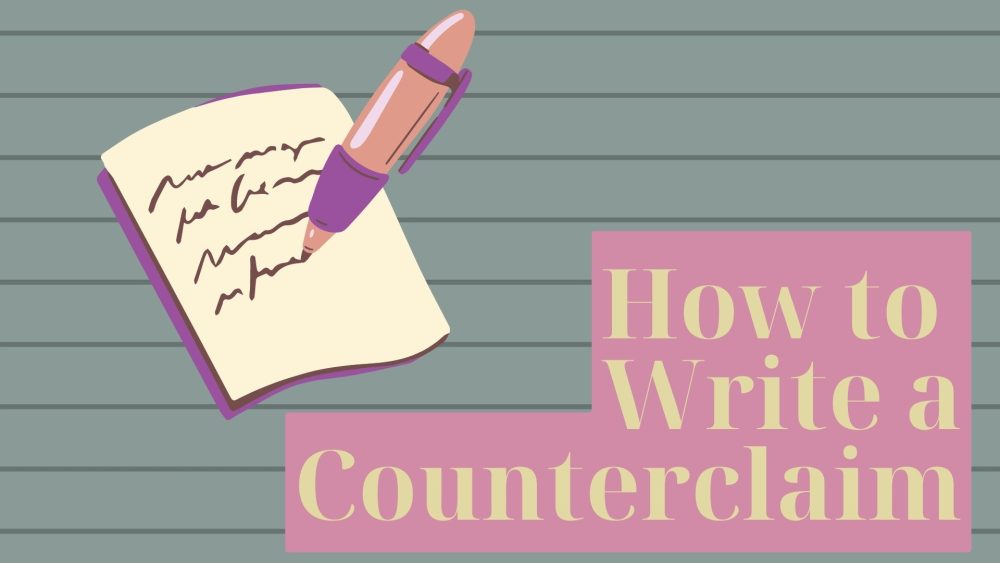
You might have probably heard about a counterclaim or written one that did not go well with you, which is why you are here. We understand your frustrations and anxiety about writing counterclaims, which is why we developed this comprehensive article.
Here is what to expect:
An in-depth explanation of what a counterclaim is The necessity of a counterclaim How to write a good counterclaim Characteristics of an excellent counterclaim Structure and formatting of counterclaims
After reading this post, you will have all the information you need to craft an award-winning paper. We will not leave anything to chance until you know how to write a counterclaim like a top-class student!
Table of Contents
What is a counterclaim in writing, why is a counterclaim necessary, how to write a counterclaim from scratch, detailed guide on how to start a counterclaim paragraph, how to write rebuttal, characteristics of a good counterclaim, example of a good counterclaim.
A counterclaim refers to an argument that opposes the author’s claim. The writer presents the claim and then refutes it, giving reasons why others should not take up the contrary view and agree with their initial stand.
The counterclaim opposes the thesis statement in your essay. So, this is how a counterclaim comes about:
- You first introduce the topic in the introductory paragraph
- Create a thesis statement in the last sentence
- Write a counterclaim that rebuts the initial argument
Many students fail to appreciate the fact that there is a difference between a claim and a counterclaim. The claim demonstrates your position of argument or the assertion of a fact, whereas a counterclaim negates a specific claim by refuting it.
Any top-rated argumentative will always have a counterclaim which disagrees with and disapproves of a claim. Such a claim also provides reasoning that further clarifies a particular argument. The two main purposes of a counterclaim are as follows:
It enhances the credibility of the author: A strong argumentative essay will utilize the rhetorical appeal of ethos. With a counterclaim, a writer will prove that they researched extensively on the topic and are not trying to hide possible information from the audience. It also allows the writer to provide a rebuttal to the essay. The rebuttal is used to disprove the counterclaim within the writer’s argument.
For instance, if the claim is that the government should ban gun use, the counterclaim would be that it should not ban it because it infringes on human rights. There should always be reasons and evidence for you to have a successful counterclaim.
In the next few lines, we will provide all you need to know about starting a counterclaim and delivering the best! So stay tuned.
Every successful essay begins with thorough background research on the topic of discussion. Exploring all possible angles of your essay before embarking on the writing process is recommended—those who end up with a good counterclaim put in extra hours in research and extensive consultation.
You can read thousands of articles on how to write a counterclaim, but without the right background research strategies, that great essay might amount to nothing. So, if you want to crack your counterclaim paragraph like a guru, here are excellent tips for you:
Understand your topic Explore what previous authors have done on it Identify the knowledge gaps Seek facts to defend your claim
Once you have all the information needed for your topic, nothing will stand in the way of you writing a top-notch paper that will impress your professor. When you have factual proof of every statement you make in your essay, you will have a non-biased and credible paper. That means that the sources you use should always be credible and directly relevant to the topic of your essay.
After stating all the base knowledge you need about counterclaims, we now want to dive into the practical part of writing a counterclaim argument. Let’s explore how to write counterclaims by looking at the elements needed:
- The main counterclaim: It states an opposing argument to the claim.
- The evidence includes a previous position to show that others welcome the view.
- An explanation entails providing reasons why people hold the particular view you presented.
- A rebuttal: Here, you will explain the weakness of the counterclaim and present show why your original position is correct.
The process might be challenging initially, but with the right tools and expert advice, you will be up and running in minutes. A counterclaim is included in argumentative writing to address the opposite side of the argument and provide a rebuttal.
The process of writing an outstanding counterclaim in an argumentative essay is as follows:
Where do you put a counterclaim in an essay? Every top-ranking essay begins with a catchy intro comprising statistics or a rather dramatic intro to a particular problem. The thesis statement follows, and the then claim comes on stage. Therefore, the counterclaim comes after you have backed up your claims with evidence and further arguments. How long is the counterclaim? It depends on the number of counterclaims and the overall length of your essay. A typical counterclaim should be at least one paragraph long. Remember that you are not just stating it but explaining why it is so. That is why most guides on writing a counterclaim and rebuttal will recommend either writing them in one paragraph or separately. What different points of view do others hold? You should always understand all the possible points that may arise to counter your claim. Researching why people oppose your claim will give you room for a balanced and reliable paper. It requires a creative mind to determine how your claim goes against the common view. How to introduce a counterclaim now: The general rule is that you should present the contrary opinion fairly. You will only be ready to craft a brilliant counterclaim once you dive into the possible arguments that others who oppose your thesis make. Sincerely present the contrary opinion fairly.
Always remember to use transitions when moving on to present your counterclaim. Just like in a debate, the contrary side will come after the proposers have made their submissions. Therefore, you can begin your counterclaim paragraphs with the following:
- On the contrary, side
- Critics say that
Having presented the other side, you will detail why people also hold that view. It is where the evidence comes in to solidify your counterclaim.
It is advisable to have it in a similar paragraph where your counterclaim is, but if that is not possible, begin it in a new paragraph. However, always remember to keep it short while bringing out the following:
- How the contrary position in your counterclaim is false or weak.
- Presenting the advantages in the counterclaim but giving reasons why the opposite view may not hold water.
- Describe how your main argument outweighs the risks in the counterclaim.
After introducing the counterclaim, you have to discuss why the counterclaim is incorrect. You can start the rebuttal in several ways, such as:
Despite this information Nevertheless However
It is your opportunity to prove why the contrary view is wrong.
You cannot achieve this milestone without considering all sides of the argument first. That is why most researchers in college and university take their time before beginning the writing process. It provides a base for the facts and opinions and saves the time one will spend completing the argumentative essay.
Acknowledging the valid points of the other side is necessary for any form of argumentative writing. This practice eliminates the thought of narrow-mindedness from the reader’s point of view, which may make your essay less effective.
Instead of making your argument look weak, a counterclaim will strengthen your essay by proving that you thoughtfully considered all possible angles before writing your essay. Nobody will accuse you of bias or inadequate research when you have a formulated counterclaim.
A good counterclaim, therefore:
Acknowledges what the opposing side says Provides evidence from the opposing side Refutes the point of view and evidence
It is also crucial to state that when you have more than one claim in your paper, there is always an option of writing a counterclaim for each. You are not limited to presenting the different counterclaims in the same essay. However, follow the structure outline above in terms of length and format.
Additional characteristics of a world-class essay include:
- Objectivity in the language use
- Fairness in the diction
- Evidence to back up the counterclaim
- Fairness in the rebuttal
By validating any underlying concerns, you eliminate room for doubt or error. Remember also to explain why your argument works in that context.
Below is a brief example of what a good counterclaim can look like, from professional dissertation writers :
“On the other hand, some students say homework presents unnecessary stress and pressure. This point of view makes sense because the article states that too much homework may be overwhelming for students, which is why most of them do not complete it. However, homework does not harm the student because the article also says that homework is necessary to test students’ understanding after classroom learning. Therefore, even though homework may cause stress and pressure on the student, it does not harm the student in any way.”
From the example, you can note the following:
Phrases that can begin a counterclaim:
On the other hand, some people say Admittedly, some people say Certainly, some people say
Phrases to refer to the initial claim:
However Nevertheless On the other hand
Phrases to bring paragraph to a conclusion:
Thus Therefore As a result
A good counterclaim will always give you an edge over your competitors in any case.
Writing A Counterclaim Can Be Very Easy
Writing an all-inclusive counterclaim is not a big deal if you have all the facts rights – our writing service and master thesis help offers top-notch assistance with an incredible team of writers and research gurus. We will help you identify winning arguments and provide you with the best rebuttals.
Do not second guess what you will score in your counterclaim essay when you can try out our custom thesis writing service today. Make your pick today and improve your score effortlessly.
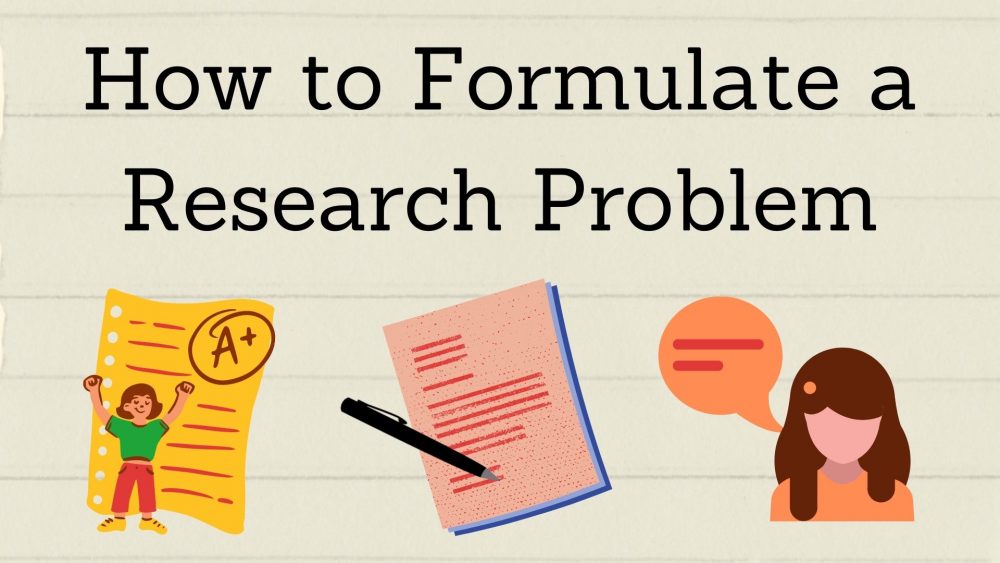
Leave a Reply Cancel reply
Your email address will not be published. Required fields are marked *
Comment * Error message
Name * Error message
Email * Error message
Save my name, email, and website in this browser for the next time I comment.
As Putin continues killing civilians, bombing kindergartens, and threatening WWIII, Ukraine fights for the world's peaceful future.
Ukraine Live Updates
Have a language expert improve your writing
Run a free plagiarism check in 10 minutes, generate accurate citations for free.
- Knowledge Base
- How to write an argumentative essay | Examples & tips
How to Write an Argumentative Essay | Examples & Tips
Published on July 24, 2020 by Jack Caulfield . Revised on July 23, 2023.
An argumentative essay expresses an extended argument for a particular thesis statement . The author takes a clearly defined stance on their subject and builds up an evidence-based case for it.
Instantly correct all language mistakes in your text
Upload your document to correct all your mistakes in minutes

Table of contents
When do you write an argumentative essay, approaches to argumentative essays, introducing your argument, the body: developing your argument, concluding your argument, other interesting articles, frequently asked questions about argumentative essays.
You might be assigned an argumentative essay as a writing exercise in high school or in a composition class. The prompt will often ask you to argue for one of two positions, and may include terms like “argue” or “argument.” It will frequently take the form of a question.
The prompt may also be more open-ended in terms of the possible arguments you could make.
Argumentative writing at college level
At university, the vast majority of essays or papers you write will involve some form of argumentation. For example, both rhetorical analysis and literary analysis essays involve making arguments about texts.
In this context, you won’t necessarily be told to write an argumentative essay—but making an evidence-based argument is an essential goal of most academic writing, and this should be your default approach unless you’re told otherwise.
Examples of argumentative essay prompts
At a university level, all the prompts below imply an argumentative essay as the appropriate response.
Your research should lead you to develop a specific position on the topic. The essay then argues for that position and aims to convince the reader by presenting your evidence, evaluation and analysis.
- Don’t just list all the effects you can think of.
- Do develop a focused argument about the overall effect and why it matters, backed up by evidence from sources.
- Don’t just provide a selection of data on the measures’ effectiveness.
- Do build up your own argument about which kinds of measures have been most or least effective, and why.
- Don’t just analyze a random selection of doppelgänger characters.
- Do form an argument about specific texts, comparing and contrasting how they express their thematic concerns through doppelgänger characters.
Prevent plagiarism. Run a free check.
An argumentative essay should be objective in its approach; your arguments should rely on logic and evidence, not on exaggeration or appeals to emotion.
There are many possible approaches to argumentative essays, but there are two common models that can help you start outlining your arguments: The Toulmin model and the Rogerian model.
Toulmin arguments
The Toulmin model consists of four steps, which may be repeated as many times as necessary for the argument:
- Make a claim
- Provide the grounds (evidence) for the claim
- Explain the warrant (how the grounds support the claim)
- Discuss possible rebuttals to the claim, identifying the limits of the argument and showing that you have considered alternative perspectives
The Toulmin model is a common approach in academic essays. You don’t have to use these specific terms (grounds, warrants, rebuttals), but establishing a clear connection between your claims and the evidence supporting them is crucial in an argumentative essay.
Say you’re making an argument about the effectiveness of workplace anti-discrimination measures. You might:
- Claim that unconscious bias training does not have the desired results, and resources would be better spent on other approaches
- Cite data to support your claim
- Explain how the data indicates that the method is ineffective
- Anticipate objections to your claim based on other data, indicating whether these objections are valid, and if not, why not.
Rogerian arguments
The Rogerian model also consists of four steps you might repeat throughout your essay:
- Discuss what the opposing position gets right and why people might hold this position
- Highlight the problems with this position
- Present your own position , showing how it addresses these problems
- Suggest a possible compromise —what elements of your position would proponents of the opposing position benefit from adopting?
This model builds up a clear picture of both sides of an argument and seeks a compromise. It is particularly useful when people tend to disagree strongly on the issue discussed, allowing you to approach opposing arguments in good faith.
Say you want to argue that the internet has had a positive impact on education. You might:
- Acknowledge that students rely too much on websites like Wikipedia
- Argue that teachers view Wikipedia as more unreliable than it really is
- Suggest that Wikipedia’s system of citations can actually teach students about referencing
- Suggest critical engagement with Wikipedia as a possible assignment for teachers who are skeptical of its usefulness.
You don’t necessarily have to pick one of these models—you may even use elements of both in different parts of your essay—but it’s worth considering them if you struggle to structure your arguments.
Regardless of which approach you take, your essay should always be structured using an introduction , a body , and a conclusion .
Like other academic essays, an argumentative essay begins with an introduction . The introduction serves to capture the reader’s interest, provide background information, present your thesis statement , and (in longer essays) to summarize the structure of the body.
Hover over different parts of the example below to see how a typical introduction works.
The spread of the internet has had a world-changing effect, not least on the world of education. The use of the internet in academic contexts is on the rise, and its role in learning is hotly debated. For many teachers who did not grow up with this technology, its effects seem alarming and potentially harmful. This concern, while understandable, is misguided. The negatives of internet use are outweighed by its critical benefits for students and educators—as a uniquely comprehensive and accessible information source; a means of exposure to and engagement with different perspectives; and a highly flexible learning environment.
The body of an argumentative essay is where you develop your arguments in detail. Here you’ll present evidence, analysis, and reasoning to convince the reader that your thesis statement is true.
In the standard five-paragraph format for short essays, the body takes up three of your five paragraphs. In longer essays, it will be more paragraphs, and might be divided into sections with headings.
Each paragraph covers its own topic, introduced with a topic sentence . Each of these topics must contribute to your overall argument; don’t include irrelevant information.
This example paragraph takes a Rogerian approach: It first acknowledges the merits of the opposing position and then highlights problems with that position.
Hover over different parts of the example to see how a body paragraph is constructed.
A common frustration for teachers is students’ use of Wikipedia as a source in their writing. Its prevalence among students is not exaggerated; a survey found that the vast majority of the students surveyed used Wikipedia (Head & Eisenberg, 2010). An article in The Guardian stresses a common objection to its use: “a reliance on Wikipedia can discourage students from engaging with genuine academic writing” (Coomer, 2013). Teachers are clearly not mistaken in viewing Wikipedia usage as ubiquitous among their students; but the claim that it discourages engagement with academic sources requires further investigation. This point is treated as self-evident by many teachers, but Wikipedia itself explicitly encourages students to look into other sources. Its articles often provide references to academic publications and include warning notes where citations are missing; the site’s own guidelines for research make clear that it should be used as a starting point, emphasizing that users should always “read the references and check whether they really do support what the article says” (“Wikipedia:Researching with Wikipedia,” 2020). Indeed, for many students, Wikipedia is their first encounter with the concepts of citation and referencing. The use of Wikipedia therefore has a positive side that merits deeper consideration than it often receives.
Receive feedback on language, structure, and formatting
Professional editors proofread and edit your paper by focusing on:
- Academic style
- Vague sentences
- Style consistency
See an example
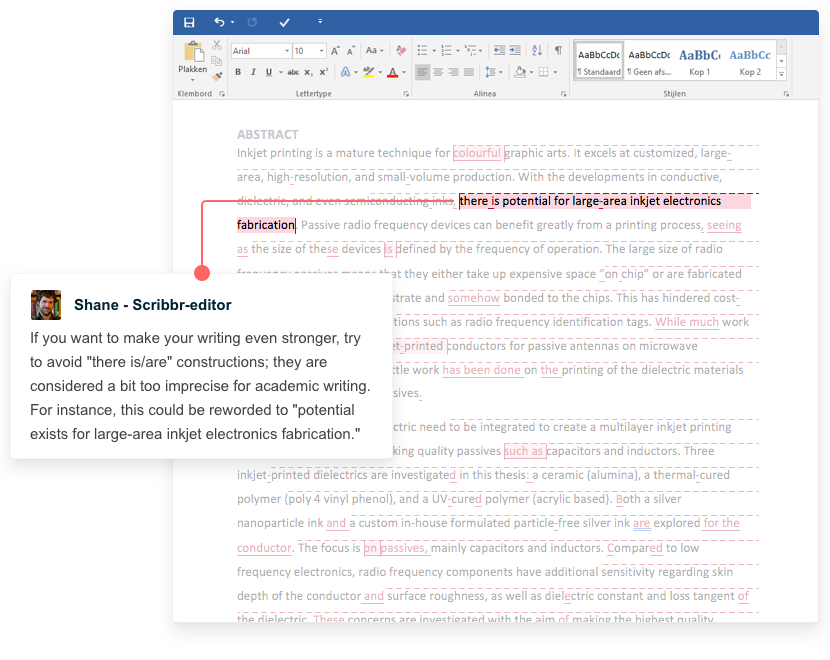
An argumentative essay ends with a conclusion that summarizes and reflects on the arguments made in the body.
No new arguments or evidence appear here, but in longer essays you may discuss the strengths and weaknesses of your argument and suggest topics for future research. In all conclusions, you should stress the relevance and importance of your argument.
Hover over the following example to see the typical elements of a conclusion.
The internet has had a major positive impact on the world of education; occasional pitfalls aside, its value is evident in numerous applications. The future of teaching lies in the possibilities the internet opens up for communication, research, and interactivity. As the popularity of distance learning shows, students value the flexibility and accessibility offered by digital education, and educators should fully embrace these advantages. The internet’s dangers, real and imaginary, have been documented exhaustively by skeptics, but the internet is here to stay; it is time to focus seriously on its potential for good.
If you want to know more about AI tools , college essays , or fallacies make sure to check out some of our other articles with explanations and examples or go directly to our tools!
- Ad hominem fallacy
- Post hoc fallacy
- Appeal to authority fallacy
- False cause fallacy
- Sunk cost fallacy
College essays
- Choosing Essay Topic
- Write a College Essay
- Write a Diversity Essay
- College Essay Format & Structure
- Comparing and Contrasting in an Essay
(AI) Tools
- Grammar Checker
- Paraphrasing Tool
- Text Summarizer
- AI Detector
- Plagiarism Checker
- Citation Generator
An argumentative essay tends to be a longer essay involving independent research, and aims to make an original argument about a topic. Its thesis statement makes a contentious claim that must be supported in an objective, evidence-based way.
An expository essay also aims to be objective, but it doesn’t have to make an original argument. Rather, it aims to explain something (e.g., a process or idea) in a clear, concise way. Expository essays are often shorter assignments and rely less on research.
At college level, you must properly cite your sources in all essays , research papers , and other academic texts (except exams and in-class exercises).
Add a citation whenever you quote , paraphrase , or summarize information or ideas from a source. You should also give full source details in a bibliography or reference list at the end of your text.
The exact format of your citations depends on which citation style you are instructed to use. The most common styles are APA , MLA , and Chicago .
The majority of the essays written at university are some sort of argumentative essay . Unless otherwise specified, you can assume that the goal of any essay you’re asked to write is argumentative: To convince the reader of your position using evidence and reasoning.
In composition classes you might be given assignments that specifically test your ability to write an argumentative essay. Look out for prompts including instructions like “argue,” “assess,” or “discuss” to see if this is the goal.
Cite this Scribbr article
If you want to cite this source, you can copy and paste the citation or click the “Cite this Scribbr article” button to automatically add the citation to our free Citation Generator.
Caulfield, J. (2023, July 23). How to Write an Argumentative Essay | Examples & Tips. Scribbr. Retrieved April 9, 2024, from https://www.scribbr.com/academic-essay/argumentative-essay/
Is this article helpful?

Jack Caulfield
Other students also liked, how to write a thesis statement | 4 steps & examples, how to write topic sentences | 4 steps, examples & purpose, how to write an expository essay, "i thought ai proofreading was useless but..".
I've been using Scribbr for years now and I know it's a service that won't disappoint. It does a good job spotting mistakes”
Pennington Publishing Blog
- Grammar/Mechanics
- Literacy Centers
- Spelling/Vocabulary
- Study Skills
- Uncategorized
Where to Put the Essay Counterclaim

Where is the best place to put the essay counterclaim? The short and sweet answer? David Oldham, professor at Shoreline Community College, states, “The short answer is a counter-argument (counterclaim) can go anywhere except the conclusion. This is because there has to be a rebuttal paragraph after the counter-argument, so if the counter-argument is in the conclusion, something has been left out.”
The counterclaim is the opposing point of view to one’s thesis and is also known as the counterargument. The counterclaim is always accompanied by a refutation, sometimes referred to as a rebuttal. The Common Core State Standards include the counterclaim in Writing Standards 1.0 for grades 7-12. These Standards reference the organization of the counterclaim in terms of clear relationships and logical sequencing. See the boldface phrases in the following grades 7-12 Standards.

Common Core State Standards
Seventh Grade: Introduce claim(s), acknowledge alternate or opposing claims, and organize the reasons and evidence logically.
Eighth Grade: Introduce claim(s), acknowledge and distinguish the claim(s) from alternate or opposing claims, and organize the reasons and evidence logically.
Ninth and Tenth Grade: Introduce precise claim(s), distinguish the claim(s) from alternate or opposing claims, and create an organization that establishes clear relationships among claim(s), counterclaims, reasons, and evidence.
Eleventh and Twelfth Grade: Introduce precise, knowledgeable claim(s), establish the significance of the claim(s), distinguish the claim(s) from alternate or opposing claims, and create an organization that logically sequences claim(s), counterclaims, reasons, and evidence.
Placement Options
1. Writers can place a separate counterclaim paragraph with refutation as the last body paragraph prior to the conclusion paragraph.
Separate Paragraph Example #1
COUNTERCLAIM Opponents argue that after school sports can increase the likelihood of sports-related injuries. Specifically, health professionals suggest that life-threatening concussions occur at frightening rates for student athletes participating in such popular after school sports as football, soccer, basketball, and wrestling (Bancroft 22, 23). Even minor injuries sustained from participation in after school sports increase absent rates and the expense of creating injury reports for students (Sizemore 3). REFUTATION Although students do suffer both serious and minor injuries in after school sports, these injuries are quite rare. The organization, supervision, and safety measures of school-sponsored sports are superior to those of alternative fee-based community-sponsored recreational leagues or even privately sponsored sports organizations (Kinney 2). Additionally, without free after school sports programs, many students would still play sports without adult supervision and even more injuries would result.
2. Writers can place a separate counterclaim paragraph without refutation as the first body paragraph following the thesis statement to anticipate objections prior to providing evidence to prove the claim of the thesis statement.
Separate Paragraph Example #2
COUNTERCLAIM Those who favor eliminating after school sports argue that after school sports can increase the likelihood of sports-related injuries. Specifically, health professionals suggest that life-threatening concussions occur at frightening rates for student athletes participating in such popular after school sports as football, soccer, basketball, and wrestling (Bancroft 22, 23). Even minor injuries sustained from participation in after school sports increase absent rates and the expense of creating injury reports for students (Sizemore 3). Additionally, youth and adolescents are not developmentally ready to play contact sports. Key components of the brain and skeletal structure have not yet formed (Mays 14), and injuries can have lasting damage to young people.
3. Writers can embed a counterclaim and refutation within a body paragraph.
Embedded within Paragraph Example
After school sports provide safe and free programs for students who might otherwise not be able to participate in individual or team sports. The organization, supervision, and safety measures of school-sponsored sports are superior to those of alternative fee-based community-sponsored recreational leagues or even privately sponsored sports organizations (Kinney 2). Additionally, without free after school sports programs, many students would still play sports without adult supervision and even more injuries would result. COUNTERCLAIM However, some people would argue that after school sports can increase the likelihood of sports-related injuries and resulting absences with the added expenses of creating injury reports for students (Sizemore 3). REFUTATION Although students do suffer both serious and minor injuries in after school sports and there are resulting absences and injury reports, without school-sponsored sports the likelihood of more injuries from less supervised recreational leagues or privately sponsored leagues with fewer safety regulations would, no doubt, be much worse.
4. Writers can embed a counterclaim and refutation within a sentence or sentences found in a body paragraph.
Embedded within Sentences Example
After school sports provide safe and free programs for students who might otherwise not be able to participate in individual or team sports. COUNTERCLAIM Even so, some would question the safety of these programs, citing the numbers of life-threatening concussions from after school sports such as football, REFUTATION but these statistics are misleading. According to the highly respected Youth in Sports report, fewer serious injuries occur to students playing after school sports as compared to students not playing after school sports (Green 22).
5. Writers can embed a counterclaim within the introductory paragraph and use the thesis statement as refutation.
Introductory Paragraph Example
After school sports are extra-curricular activities included in most elementary, middle school, and high schools throughout the world. COUNTERCLAIM Some would argue that schools can no longer afford these programs and the expenses of lawsuits resulting from sports-related injuries. REFUTATION AS THESIS STATEMENT On the contrary, schools can and should invest in well-supervised after school sports to promote health and minimize sports-related injuries.
Each of these counterclaim placements has merit, depending upon the nature of the argumentative essay. Help students develop the writing flexibility and dexterity they need by applying each of these strategies in the draft and revision stages. As always, show models of counterclaims and refutations, teach a variety of types of evidence , and help students avoid the pitfalls of fallacious reasoning .
In addition to Where to Put the Essay Counterclaim, writing teachers may also be interested in these related articles: Counterclaim and Refutation Sentence Frames , What is the Essay Counterclaim? , and Why Use an Essay Counterclaim?

TEACHING ESSAYS BUNDLE
The author’s TEACHING ESSAYS BUNDLE includes the three printable and digital resources students need to master the CCSS W.1 argumentative and W.2 informational/explanatory essays. Each no-prep resource allows students to work at their own paces via mastery learning. How to Teach Essays includes 42 skill-based essay strategy worksheets (fillable PDFs and 62 Google slides), beginning with simple 3-word paragraphs and proceeding step-by-step to complex multi-paragraph essays. One skill builds upon another. The Essay Skills Worksheets include 97 worksheets (printables and 97 Google slides) to help teachers differentiate writing instruction with both remedial and advanced writing skills. The Eight Writing Process Essays (printables and 170 Google slides) each feature an on-demand diagnostic essay assessment, writing prompt with connected reading, brainstorming, graphic organizer, response, revision, and editing activities. Plus, each essay includes a detailed analytical (not holistic) rubric for assessment-based learning.
Grammar/Mechanics , Literacy Centers , Study Skills , Writing argument essay , argumentative essay , claims , common core writing standards , Counterarguments , Counterclaims , essay argument , essay strategies , Mark Pennington , Opposing Claims , rebut , Rebuttal , Refutation , refute , Teaching Essay Strategies , types of evidence
- No comments yet.
- No trackbacks yet.
Links to Programs and Resources
- About the Author/Contact Us
- Free Reading/ELA Assessments
- Free Articles and Resources
- Testimonials
Join the SOR Literacy Hub - Resource Sharing FB Group
https://www.facebook.com/groups/sorliteracyhub
Recent Articles
- Free Science of Reading Lessons | ELL January 2, 2024
- Free Science of Reading Lessons | SPED January 2, 2024
- Free Science of Reading Lessons | High School January 2, 2024
- Free Science of Reading Lessons | Middle School January 2, 2024
- Free Science of Reading Lessons | Grade 6 January 2, 2024
- Free Science of Reading Lessons | Grade 5 January 2, 2024
- Free Science of Reading Lessons | Grade 4 January 2, 2024
- Reading Intervention Flow Chart December 19, 2023
- Mid-Year Reading Intervention Checklist December 19, 2023
- Reading Rules versus Patterns? December 19, 2023
Legal Dictionary
The Law Dictionary for Everyone
Counterclaim
There are two sides to every argument: (1) the “claim,” and (2) the “counterclaim.” The first is a statement of the party’s point, or argument for something. The second is a rebuttal , or argument opposing the claim. Once the parties have made their claims and counterclaims, they introduce the reasoning behind their arguments, and present evidence to support those claims. The claim/counterclaim system is used to make points in everything from essays and scientific papers, to litigation . To explore this concept, consider the following counterclaim definition.
Definition of Counterclaim
- A claim made to offset another claim in a legal action.
- To assert a claim for relief against a party who has made an original claim.
1775-1785 English (counter +claim)
What is Counterclaim
In very simple terms, a counterclaim is the opposite of a claim. In the legal system, once a person (the “ plaintiff ”) has filed a legal action, which makes certain claims against the other party (the “ defendant ”), the defendant must file an answer to the claims with the court. Once this has been done, the process of each party proving his own position begins. The counterclaim is just one of the four elements of an argument, which include:
- Claim – to assert facts that give rise to a legally enforceable right or judicial action
- Counterclaim – a claim for relief made in opposition to, or to offset another person’s claim
- Reasons – the rationale behind a party’s claim
- Evidence – something that proves the truth of a claim, or leads to a conclusion
Counterclaim Example
Marsha is a busy design consultant for a home décor and renovation company. Her job frequently takes her out of the office to visit clients’ homes and offices to formulate a redecoration plan, personally pick out supplies, and to personally check up on the construction or installation. Marsha’s phone is constantly ringing, as she fields phone calls throughout the day, regardless of her location. Marsha desperately wants to separate her stressful job from her personal life, so she tells her employer, Ralph, that she needs a company cell phone. Ralph, thinking only of the additional expense, simply says “No.”
Marsha has made her claim – asking for a company cell phone.
Ralph has made his counterclaim – responding in the negative.
Now Jane must offer substantial and valid reasons to convince Ralph that she needs the company to provide her with a company phone. Jane might provide evidence of the hardship using her personal phone is causing her and her family. Jane’s reasoning may include a description of how often clients call her phone when she is at her daughter’s soccer games on Saturdays, when she is sitting down to dinner with her family, or when she is out on “date night” with her husband.
Jane may point out that she receives so many business phone calls that she has had to record a business-like greeting for her voicemail, which confuses friends and family, who think they have called her “at work” by mistake. As evidence, Jane may give Ralph copies of her cell phone activity for the past couple of months, highlighting the many business calls she has received and made.
In this example of counterclaim, Ralph now needs to support his refusal to provide Jane with a company phone. He should be ready to give good, substantiated reasons for his refusal to provide something that the company should have been paying for all along. This may include evidence of the company’s inability to foot the bill, and that the company does not require Jane to take calls on her personal phone.
Compulsory Counterclaims and Permissive Counterclaims
Once a party has filed a civil lawsuit , the defending party may file a counterclaim against him. Such a claim is aimed directly at the plaintiff for coexisting damages or claims in the same matter, which may serve to lessen the defendant’s liability . Some states have attempted to consolidate related matters by requiring that a defendant file a counterclaim on any issue directly related to the original lawsuit. This is a compulsory counterclaim , as the defendant is required to bring up any issues that may counter the plaintiff’s claim, as part of the same lawsuit. If he fails to do so, he cannot make that claim later in a separate lawsuit.
For instance, the Federal Rules of Civil Procedure , Title III, Rule 13 , compels a compulsory counterclaim if:
(a) (1) … A pleading must state as a counterclaim any claim that—at the time of its service—the pleader has against an opposing party if the claim:
(A) arises out of the transaction or occurrence that is the subject matter of the opposing party’s claim; and
(B) does not require adding another party over whom the court cannot acquire jurisdiction .
A permissive counterclaim is instituted by a defendant against a plaintiff in a lawsuit, but the defendant’s claim does not arise from the same issue or transaction as the plaintiff’s original claim. Many states allow permissive counterclaims, depending on the subject matter, and how it relates to the original lawsuit. While a defendant is not required to bring up such issues during the current case, as would be the case in a compulsory counterclaim, if he does, and the issue is decided by the court as part of the lawsuit ruling, the defendant cannot bring that claim later in another lawsuit.
Example of Compulsory Counterclaim
Martin convinces his friend, Adam, to invest in his new ice cream truck business. The two enter into a written contract, which specifies that Adam will put in an initial investment of $5,000, and that Martin will do all of the work in obtaining an ice cream truck and inventory, and that he will work the truck. Adam agreed to pay another $5,000 in four months’ time to help ensure the business is well-funded in its early months. Sixty days after Adam paid Martin the initial $5,000, he discovered that Martin hadn’t purchased the truck or inventory like he was supposed to do, yet the money has been spent. As a result, Adam backs out, refusing to pay any more money.
Martin files a lawsuit in small claims court, asking the court to order Adam to pay the remaining $5,000 required by the contract. At trial , Adam argues that Martin hadn’t done the things he was supposed to do according to the business plan, and he suspected he didn’t intend to, which is the reason he had backed out of the deal. The judge rules in Martin’s favor, because the two had a written contract, and Adam hadn’t proven that Martin would not, or could not, accomplish all of the necessary tasks for the business. Adam is ordered to pay Martin the remaining $5,000, and the contract is to remain in full force and effect.
Once Martin had filed his lawsuit, Adam could have filed a counterclaim, claiming that Martin had fraudulently convinced him to invest the money, and asking for his $5,000 investment to be returned. This counterclaim then requires Martin to show to the court that he had indeed been fulfilling his responsibilities according to the contract, and that he will continue to do so. In such a case, the court will hear the entire case, from both sides, before making its decision.
A ruling in this example of counterclaim will likely balance the liability between both sides, with a net judgment being rendered. For instance, if the court determines that Adam does indeed have to pay the other $5,000, but that Martin had falsely inflated the amount of money needed in order to trick Adam into giving him $2,000 more than the business required, Adam may be ordered to pay Martin only $3,000.
If the pair lived in a state of compulsory counterclaim, Adam would be required to make this claim within a certain period of time after Martin had filed the lawsuit. If he failed to do so, he could not later file a lawsuit claiming Martin had fraudulently induced him into the contract.
Frivolous Counterclaim Rejected by Court
In 2013, three limited partners of a failed real estate venture filed a civil lawsuit against the general partners, who controlled the company. The plaintiffs accused the general partners of mishandling the business, causing the loss of their $1.9 million investment. Shortly after this lawsuit was filed in a New Jersey court, the defendant managing partners filed a counterclaim, suing the limited partners for breach of fiduciary duty , waste of corporate funds, and violation of the covenant of good faith and fair dealings.
The plaintiff partners immediately realized that the counterclaim was a thinly veiled attempt to manipulate and restrict settlement efforts, and filed a motion to dismiss the counterclaim. In the counterclaim, the managing partners argued that, by suing them, the limited partners were wasting company money, which was ultimately used to defend the lawsuit. The court noted that, while partners usually owe a fiduciary duty to one another in their business venture, such duty is generally imposed on the majority or controlling partner. The limited partners in Deerhaven LLC had no control over the company, and therefore had no fiduciary duty to not bring suit against the managing partners.
In this example of counterclaim, the claim was found to be frivolous and dismissed by the court. The judge wasn’t through there, however, as he sanctioned the managing partners, ordering them to pay the minority partners’ attorneys’ fees.
Related Legal Terms and Issues
- Civil Lawsuit – A lawsuit brought about in court when one person claims to have suffered a loss due to the actions of another person.
- Covenant of Good Faith and Fair Dealings – A presumption that parties to a contract will deal with one another fairly, honestly, and in good faith.
- Defendant – A party against whom a lawsuit has been filed in civil court, or who has been accused of, or charged with, a crime or offense.
- Fiduciary Duty – A legal duty to act in another party’s best interest.
- Frivolous – Something of little importance, or which has no sound basis in fact or law.
- Plaintiff – A person who brings a legal action against another person or entity, such as in a civil lawsuit, or criminal proceedings.

Donald Trump Will Have New Trial After 2024 Election
D onald Trump's lawsuit against ABC News will be heard in April, 2025, and if he wins the November election he could become the first sitting president to give evidence in a defamation lawsuit.
On Tuesday, Miami federal judge Cecilia Altonaga set the trial date for two weeks starting on April 7, 2025 and also set up the pre-trial schedule.
Trump accuses ABC News and host George Stephanopoulos of defamation for "falsely stating on several occasions that Plaintiff had been found liable by multiple juries for the rape of Ms. E. Jean Carroll ."
Trump's lawsuit also states that the claim is "false, intentional, malicious and designed to cause harm."
Newsweek sought email comment from ABC News on Wednesday.
In May, 2023, a New York jury found that Trump did not rape Carroll, as she had asserted, but he had sexually assaulted her. The jury awarded her $5 million for defamation and sexual assault.
Trump countersued Carroll, saying that the jury had decided her rape allegation was false. In August, 2023, Judge Lewis Trump dismissed the counterclaim, saying that rape and sexual assault are both "felonious sex crimes". He added that Carroll's allegations have been shown to be "substantially true."
In January, 2024 a second New York jury awarded Carroll an additional $83.3 million for defamation for Trump's continued denial of the sexual assault . Trump has posted a $91.6 million bond for an appeal.
Trump's lawsuit against ABC arose from an episode of the current affairs program This Week, which aired on March 10.
In it, Stephanopoulos asked Republican congresswoman Nancy Mace how she could continue to support Trump after he had raped Carroll.
"You endorsed Donald Trump for president. Judges and two separate juries have found him liable for rape and for defaming the victim of that rape. How do you square your endorsement of Donald Trump with the testimony that we just saw?" Stephanopoulos asked Mace.
Mace, a rape victim, shot back that Stephanopoulos was asking insensitive questions.
"It was not a criminal court case, number one. Number two, I live with shame. And you're asking me a question about my political choices trying to shame me as a rape victim," she said.
Altonago said that Trump and ABC must agree on a mediator by April 29.
A mediator is routinely appointed in lawsuits to see if an agreement can be reached before trial.
"If the parties cannot agree on a mediator, they shall notify the Clerk in writing as soon as possible, and the Clerk shall designate a certified mediator on a blind rotation basis."
"Within seven days of mediation, the parties are required to file a mediation report with the Court," she wrote.
Start your unlimited Newsweek trial


IMAGES
VIDEO
COMMENTS
Step 1: Write a counterclaim. Write a sentence that contradicts the claim. For example, if your thesis says, "Everyone should eat chocolate ice cream," then your counterclaim might be, "Some people are allergic to chocolate.". Step 2: Explain the counterclaim. The more "real" you make the opposing position, the more "right" you ...
There is a big difference between a claim and a counterclaim. When writing essays, one may need to include both in the same essay, especially when presenting an argumentative topic. The difference between a claim and a counterclaim lies in their assertion. A claim is a statement that demonstrates the position of argument or the assertion of a ...
The 4 parts of an argumentative essay are the claim, counterclaim, reasoning, and evidence. The claim is the author's argument that they are attempting to prove in the essay. The counterclaim is ...
The most common spots are the following: Before your conclusion. This is a common and effective spot for a counterargument because it's a chance to address anything that you think a reader might still be concerned about after you've made your main argument. Don't put a counterargument in your conclusion, however.
Good ways to start your counterclaim paragraph include: "Critics have argued that…". "Some people may conclude that". "On the other side of the argument, people are concerned that…". "The opposing viewpoint states that…". Once you have stated the alternative view, go ahead and describe why that view is held. Present evidence.
Another key feature of argumentative writing is the counterclaim. The counterclaim is the opposing claim or the opposite of the writer's position. For example, if the writer's claim is "Cats are ...
When writing an argumentative essay, there's always an opposing point of view. You can't present an argument without the possibility of someone disagreeing. ... To use rebuttals effectively, come up with a strong counterclaim and respectfully point out its weaknesses. Then present new ideas that fill those gaps and strengthen your point ...
Introduction. When you're diving into a persuasive speech, article, or essay, there are two key things to look out for: the claim and the counterclaim. The claim is basically what the author believes and wants you to agree with. It's their main point or argument about a topic. On the flip side, the counterclaim is the opposite stance.
A thesis statement is a claim that sets up your argument. Your thesis should situate your argument within a broader discussion, which will likely involve addressing possible objections, or counter-claims. Counter-claims will help you develop a well-rounded argument by showing you've considered many possible positions on your topic.
Writing a paper can be challenging, especially when you have to address counterarguments that may oppose your main claim. In this academic guide, you will learn how to respond to counterarguments effectively and persuasively, using strategies such as refutation, concession, and rebuttal. This guide will help you improve your writing skills and achieve your course goals.
A counterclaim essay, if done well, shows that the writer has considered both sides of the picture, which strengthens its position. Argumentative writing, thesis, or any other assignments that may involve convincing the audience in favor of your point of view can Use counterclaims to persuade the audience of the writer's opinion. Any form of ...
An argumentative essay presents an argument for or against a topic. For example, if your topic is working from home, then your essay would either argue in favor of working from home (this is the for side) or against working from home.. Like most essays, an argumentative essay begins with an introduction that ends with the writer's position (or stance) in the thesis statement.
Counterclaim: You should anticipate a counterclaim that negates the main points in your argument. Don't avoid arguments that oppose your own. Instead, become familiar with the opposing perspective. If you respond to counterclaims, you appear unbiased (and, therefore, you earn the respect of your readers). You may even want to include several ...
The key to excellent argumentative writing is to make your position convincing and clear while acknowledging - not to mention rebutting - the counterarguments. Fortunately, you can break down the process of crafting a great counterclaim into four simple steps: 1. Research, Research, Research. Of course, a thorough understanding of your ...
Counterargument. When you write an academic essay, you make an argument: you propose a thesis and offer some reasoning, using evidence, that suggests why the thesis is true. When you counter-argue, you consider a possible argument against your thesis or some aspect of your reasoning. This is a good way to test your ideas when drafting, while ...
When writing your counterargument paragraph, you should respond to that other position. In your paragraph: Identify the opposing argument. Respond to it by discussing the reasons the argument is incomplete, weak, unsound, or illogical. Provide examples or evidence to show why the opposing argument is unsound, or provide explanations of how the ...
Teaching claims, counterclaims and rebuttals in writing can improve a students opinion or argumentative essay. This post will explain how I teach claims, counterclaims and rebuttals in writing. To begin, let's clarify the meaning of the following terms when giving instruction: Counterclaim. Rebuttal. Reason.
Create a thesis statement in the last sentence. Write a counterclaim that rebuts the initial argument. Many students fail to appreciate the fact that there is a difference between a claim and a counterclaim. The claim demonstrates your position of argument or the assertion of a fact, whereas a counterclaim negates a specific claim by refuting it.
How to Deal With Counterclaims in Your Essay. Counterclaims can be quite challenging to write. On the one hand, you have your position to defend and you have to do so using all the evidences that you can use. On the other hand, you have the opposing view to consider and include in the essay.
Make a claim. Provide the grounds (evidence) for the claim. Explain the warrant (how the grounds support the claim) Discuss possible rebuttals to the claim, identifying the limits of the argument and showing that you have considered alternative perspectives. The Toulmin model is a common approach in academic essays.
The counterclaim is the opposing point of view to one's thesis and is also known as the counterargument. The counterclaim is always accompanied by a refutation, sometimes referred to as a rebuttal. The Common Core State Standards include the counterclaim in Writing Standards 1.0 for grades 7-12. These Standards reference the organization of ...
Once the parties have made their claims and counterclaims, they introduce the reasoning behind their arguments, and present evidence to support those claims. The claim/counterclaim system is used to make points in everything from essays and scientific papers, to litigation. To explore this concept, consider the following counterclaim definition.
Starting your essay by making a counterclaim in writing from the very first sentence may seem daunting, but you will find that it often provides a profound impact to the argumentative strength of your opposing claim. In this article, we explore various useful counter argument starters and example phrases for you to incorporate into the first ...
In August, 2023, Judge Lewis Trump dismissed the counterclaim, saying that rape and sexual assault are both "felonious sex crimes". He added that Carroll's allegations have been shown to be ...